ThingsThat Matter
BY GARY HENDERSON
adapted from the memoir by David Galler
EDUCATION PACK

Education Pack writers: Evangelina Telfar and Anna Richardson
Additional contributions by: Laura Barron, Donogh Rees, Shaan Kesha, Rachel Marlow, Bradley Gledhill and Lynne Cardy
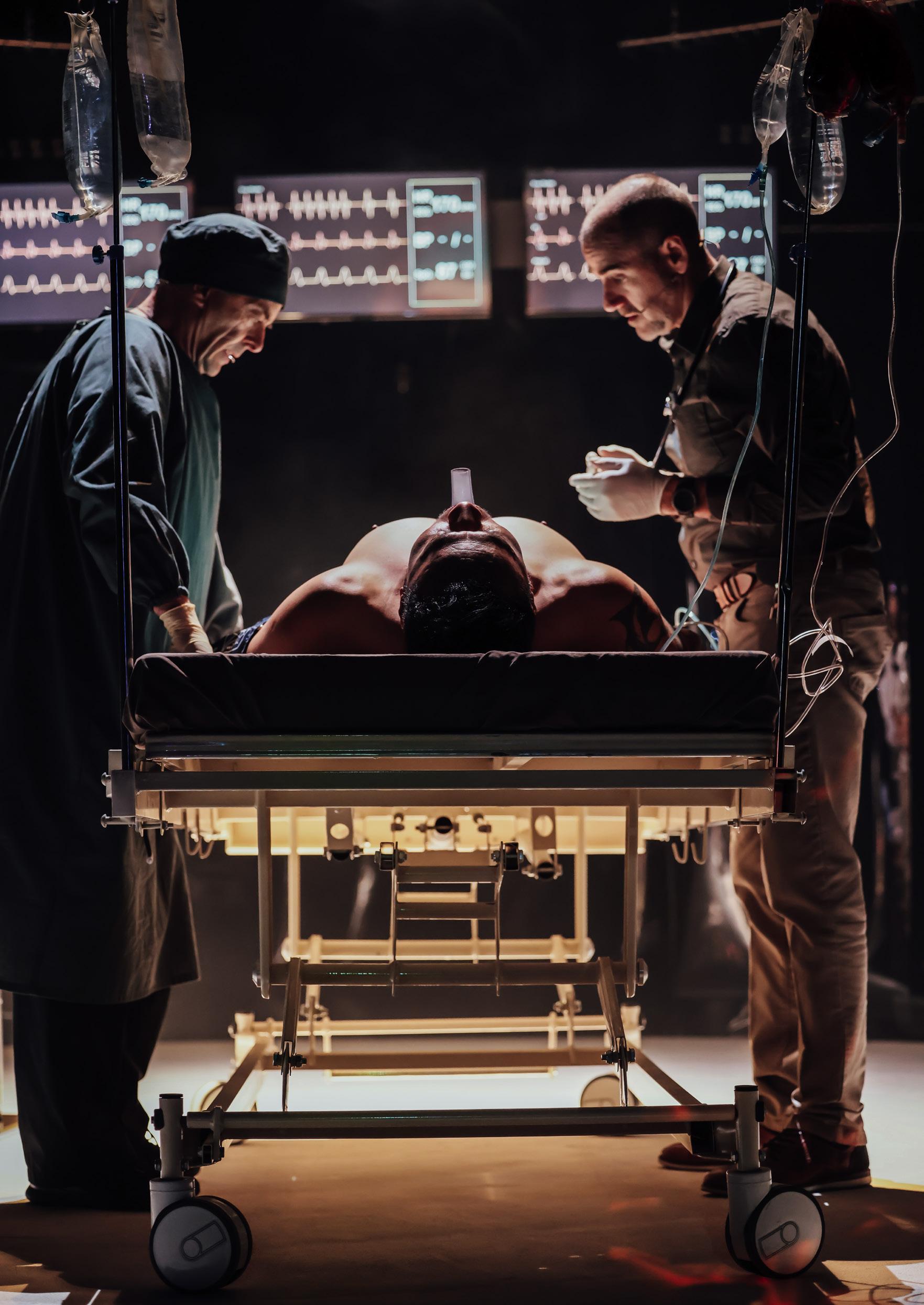
2
2021 production of Things That Matter. Credit: Andi Crown
Contents
About The Play
P.05
Characters P.08
Telling Stories That Matter
P.12
Extension Activities
P.18
Directing Things That Matter
P. 23
Playing People That Matter
P.31
An Actor Prepares
P. 39
Production Design
P.40
Themes
P.51
What Does a Healthy New Zealand Look Like?
P.55
Glossary of Medical Terms
P.60
Revision Questions for Things That Matter
P.62
Readings and Resources
P.68
Venue: ASB Waterfront theatre, 138 Halsey Street, Auckland
School Matinee
Performance: Thu 17 Aug 2023, 11am
Patron's
Performance: Tues 22 Aug 2023, 11am
Running Time: Schools Performances: 2 hours, no interval
Public Performances: 2 hours, plus a 20 minute interval
Post-Show Takes place in the theatre immediately after the Forum: performance (15 – 20minutes)
Suitability: This production is suitable for Year Levels 11 – 13
Advisory: Occasional use of strong language, descriptions of medical procedures/injuries. Please note this production discusses topics related to and displays images from the Holocaust.
1
Things That Matter
 BY GARY HENDERSON
BY GARY HENDERSON
adapted from the memoir by David Galler
12 – 27 AUG 2023
CAST
David Aston — Simon/Matheson/ Minister
Semu Filipo — Sol/Chris
Margaret-Mary Hollins — Judith/ Stephanie
Jen Huang — Edie
Ian Hughes — Rafal Beckman
Greg Johnson — Leon Beckman
Nicola Kāwana — Carol
Shaan Kesha — Dev
Stacey Leilua — Ana/Tiara
Petmal Petelo Lam — Seleni
Donogh Rees — Roza Beckman
Elsie Ropati — Tusi
Michaela Te Awa Bird — April
CREATIVE
Playwright — Gary Henderson
Director — Anapela Polata’ivao
Assistant Director —
Petmal Petelo Lam
Dramaturg — Philippa Campbell
Production Designers —
Filament Eleven 11 – Rachel Marlow & Bradley Gledhill
Composer & Arranger —
Poulima Salima
Costume Designer — Nic Smillie
Sound Designer — Matt Eller
PRODUCTION
Production Managers — (Pilot Productions) Sam Clavis, Annah Jacobs
Stage Manager — Catherine Grealish
Deputy Stage Manager —
Eliza Josephson-Rutter
Assistant Stage Manager —
Sofia Miernik
Head Mechanist — Patrick Minto
Fly Technician — T.J. Haunui
Head of Lighting & Vision —
Ella Madsen Brough
Technical Operator — Peter Davison
Chief Sound Engineer — Luke Finlay
Audio Mix Engineer — Chris Armitstead
Radio Microphone Technician —
Joel Orme
Props Managers — Nati Pereira, Magdalena Hoult
Production Runner — Callum Stembridge
Teaching Artists —
Matthew Kereama, Brit O’Rourke
Education Pack Writer —
Evangelina Telfar
Medical Advisor — Sally Geary
Hebrew Advisor — Avi Shenkin

Publicity — (Healthy Communications)
Susie Hill
International Institute of Modern Letters (IIML) Placement — Martain Ravn
Photographer — Jinki Cambronero
Adapted from the memoir by Dr David Galler, Things That Matter by Gary Henderson was commissioned by Auckland Theatre Company in 2018. The world premiere season was scheduled for August 2021 but was cancelled on Tuesday 17 August 2021 an hour before the first preview after a Level Four Lockdown was announced for New Zealand. This rescheduled season is the fifth production in Auckland Theatre Company’s 2023 season, premiering on Saturday 12 August 2023 at the ASB Waterfront Theatre. Please switch off all noise emitting devices.
3
 2021 production of Things That Matter. Credit: Andi Crown
2021 production of Things That Matter. Credit: Andi Crown
About The Play
Things That Matter
was
commissioned by Auckland Theatre Company and adapted by Gary Henderson from the memoir Things That Matter: Stories of Life & Death by Dr
David Galler.
This new New Zealand play centres around Dr Rafal (Raf) Beckman, his medical team, and the patients in the intensive care unit at Auckland’s Middlemore Hospital.
While Rafal juggles the pressures of running the ICU in the overcrowded and understaffed hospital with his role as an advisor to the Minister of Health, he also struggles with feelings of guilt towards his family, particularly his terminally ill mother, Roza, a Holocaust survivor.
As the play progresses, we learn about the pressing issues of our health system, from underfunding to systemic racism and how the staff and patients are affected. But Rafal’s compassion towards his patients and their families never waivers and by the end of the play he learns to accept his own grief and loss.
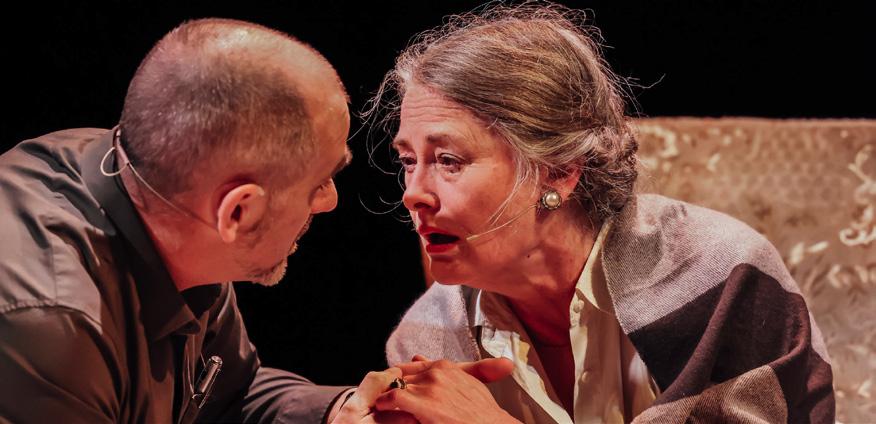
5

6
2021 production of Things That Matter. Credit: Andi Crown
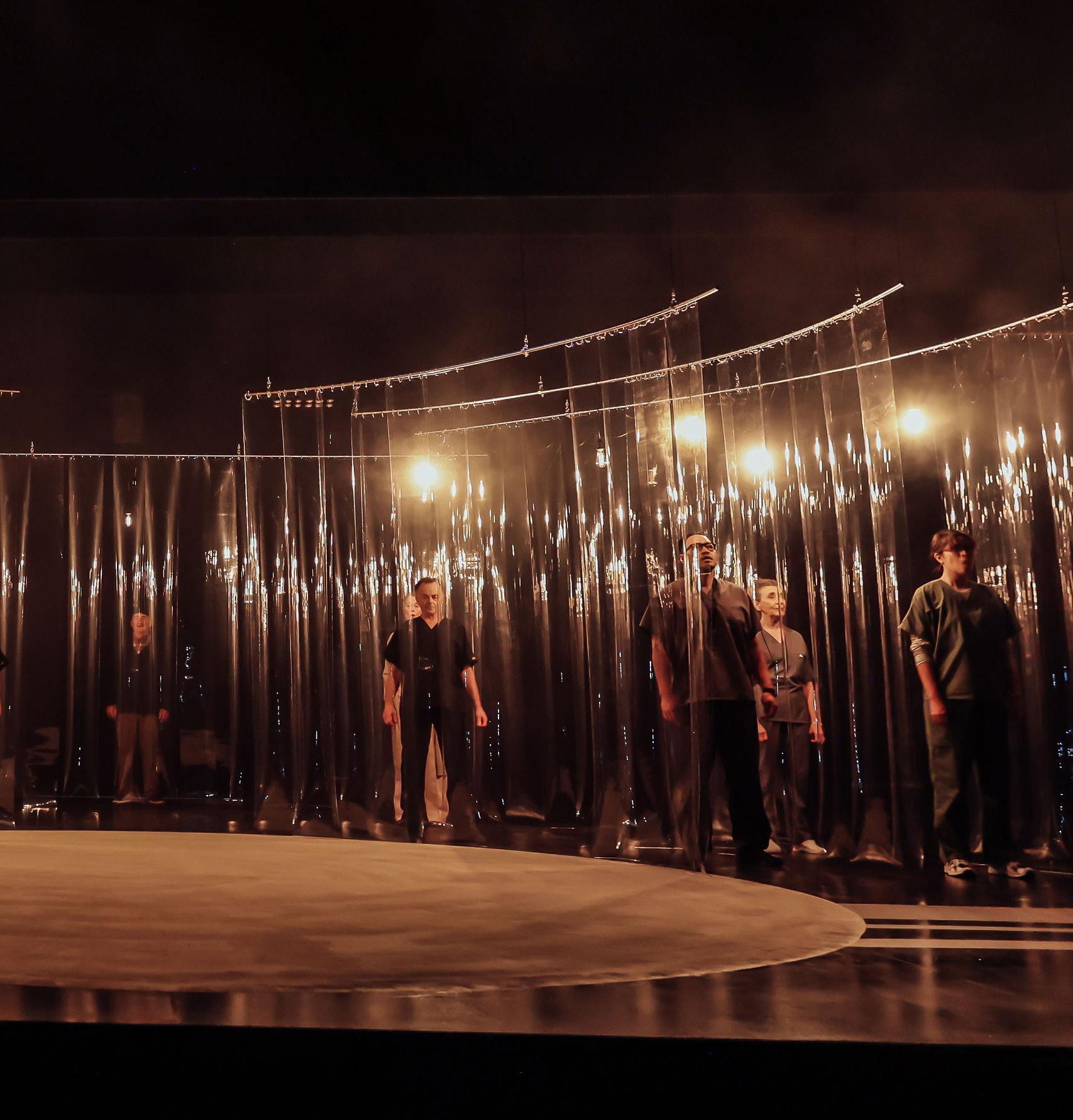
7
Characters
Several characters (including the Beckman family) and events in the script are based on real people and events described in David Galler’s memoir, but their portrayal in the play, their actions and conversation, is entirely fictional.
Rafal Beckham is a Pakeha intensive care specialist doctor at Middlemore Hospital in South Auckland and the Principal Medical Advisor to the Minister of Health. He is a very skilled doctor who is good at making tough decisions. Rafal’s family is Jewish, his parents emigrated to New Zealand from Poland after WW2. He relaxes from the stress of his job by swimming.
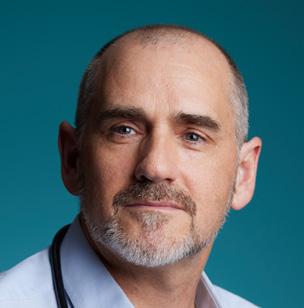
Leon, a Polish Jewish immigrant, settled in Wellington with his wife Roza. Raf is one of their two sons. Leon worked hard for many years to get compensation from the German Government for Roza’s suffering during the Holocaust. In the play he acts as Rafal’s conscience.
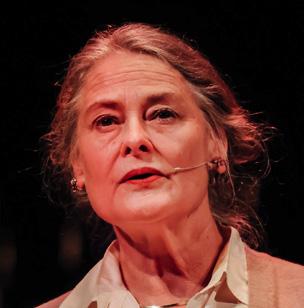
As a child Roza survived imprisonment in Auschwitz. Her father was murdered by the Gestapo in front of her, and her mother died in the camp. Though her friends encourage her to return to the Synagogue, Roza has no faith in God. Roza is ill with oesophageal cancer and wants Raf to spend as much time with her as he can.
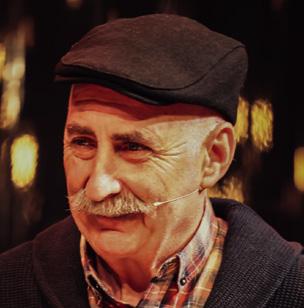 Rafal Beckman
Leon Beckman
Roza Beckman
Rafal Beckman
Leon Beckman
Roza Beckman
8
Carol
A head nurse in the Emergency Department at Middlemore Hospital and Rafal’s key colleague. Carol is a practical confident wāhine Maori. She is good at keeping everyone in line and supportive of the staff.
Ana
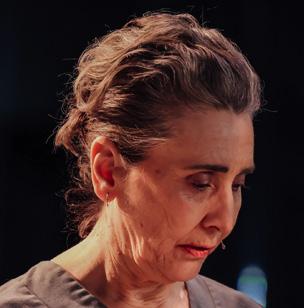
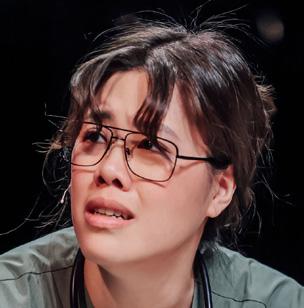
A passionate young Samoan Emergency Department nurse.

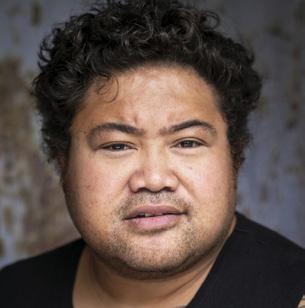

Edie
A Chinese-New Zealander Emergency Department doctor at Middlemore. She believes in people taking personal responsibility for their health.
Dev
A South Asian resident doctor at Middlemore. Dev is struggling with the pressures of the work.
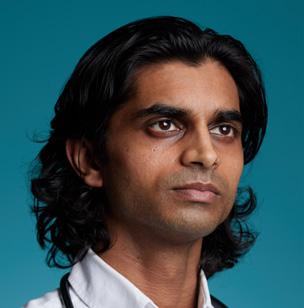
Minister of Health
Practical and businessminded, a seasoned politician with an eye firmly on being re-elected.
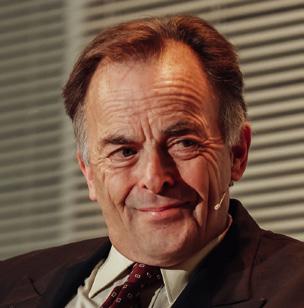
Judith and Simon Nagel
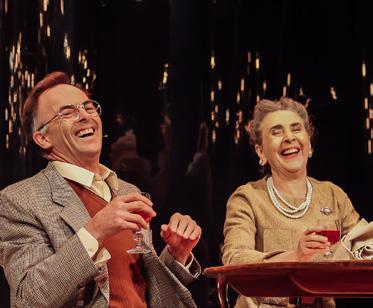
Longstanding close friends of Roza and Leon.
Chris
A patient. Chris is hit by a truck on an evening cycle ride and is close to death when he arrives at Middlemore.
Stephanie Chris’ wife. With Chris hospitalised, her family has lost its anchor.
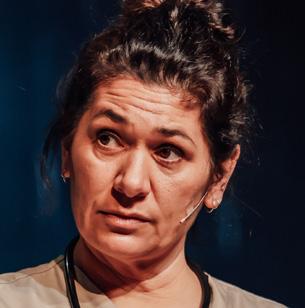
Seleni
A patient, Seleni is suffering from very severe cellulitis.
9
Tusi
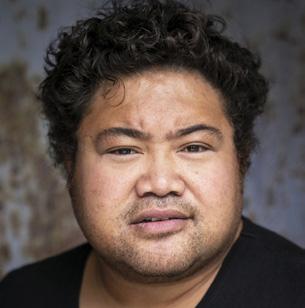
Seleni’s mother who navigates the hospital system on her daughter’s behalf.
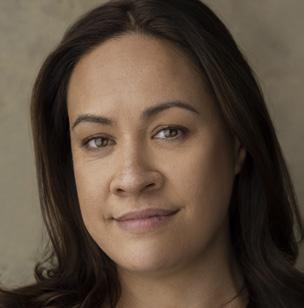
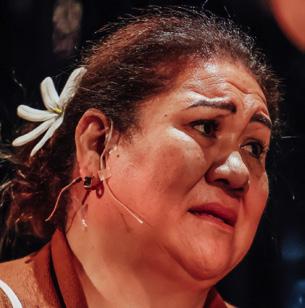
Tiara
A patient. Tiara’s flatmates call an ambulance to take her to Middlemore when they discover her having a seizure after a night out clubbing.
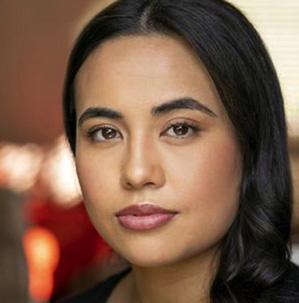
April
Tiara’s sister, determinedly optimistic that her sister will make a full recovery.
Sol
Tiara and April’s father, still grieving from the recent death of his wife.
EXTENSION ACTIVITIES
• How was it made evident in this production that Leon was Rafal's conscience?
• Describe a moment where a character was the focus in the performance. Think about and discuss the function of the character in that moment: Why that specific character was the focus in that moment, their position on stage and the effect of the focus being drawn to the character
10

11
2021 production of Things That Matter. Credit: Andi Crown
Telling Stories That Matter
Evangelina Telfar talked to playwright Gary Henderson about what he learned in the process of adapting David Galler’s memoir and why this story matters.
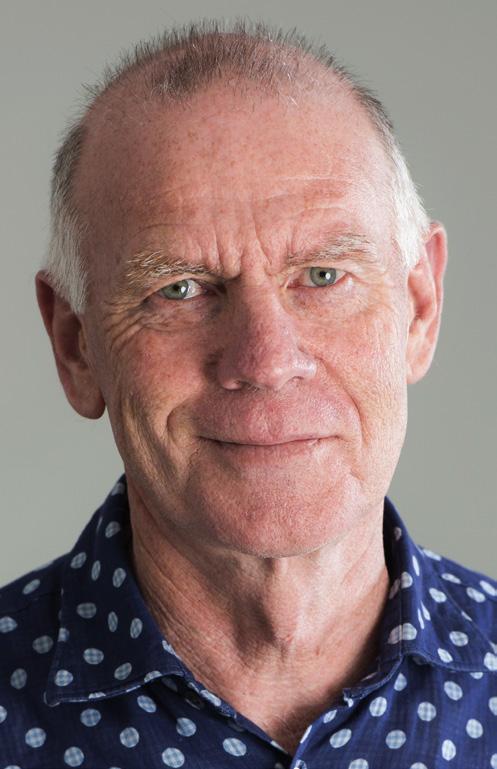
In this piece you integrate What do you think are some of the differences between the book and this play?
The book is structured very differently. It’s not chronological. All the chapters are about a different organ of the body. David brings together stories of his experience of dealing with people’s suffering from some complaint that affects that organ. There was some sense of bringing that poetry into the play, but I haven’t really done it. I’ve tried to do it visually with images of X rays and things like that.
The whole book is written after his mother’s death but the whole last chapter is about his mother’s life.
12
Gary Henderson. Credit: The Court Theatre
The book starts with his father’s death, so I decided in my timeline it would be the space between his father’s and mother’s death.
How long have you been working on adapting Things That Matter and is it any different to the time it takes you to write an original work?
I’m just a really slow worker and I procrastinate. Sometimes it’s that fear about how you daydream how wonderful something is going to be but there comes a moment when you have to do it. The longer you delay doing it, the longer you can daydream about how wonderful it is because it doesn’t exist.
There were times when I wouldn’t work on it for a few months, but the deadlines helped. I always wish I was more efficient. In the end, I just think this is how I work.
What has been rewarding about adapting this book for the stage for you as a writer?
The things that it’s forced me to think about personally and look at in my own life. It was rewarding to me to delve into this because I read a lot and some of the issues I’m still grappling with. Just the things I had to confront and change the way I behave and think. And around the ideas around decolonisation.
I think it’s what white people have to do. You can’t just back away from the space because the space is not neutral. You actually have to do something. It’s made me say to myself, what am I going to do? What am I going to do in my life to decolonise New Zealand?
13
How have you made this memoir into a theatrical experience through script?
I had a particular vision for how I wanted it to look on stage because of the treatment of time. Raf just moves from one reality to another. Little things, like he talks to his father in front of Carol who can’t see him but then Carol gives him a bottle of wine to walk over to his parent’s table. Time is not a constraint.
I wanted you to be able to see his mother sitting at the table having a cigarette while there’s a medical scene going on over here and when he was at his parent’s place, I wanted you to be able to see the patients in the gloom behind him. So, none of those worlds disappeared. Everything is always happening.
What parts of the story did you fictionalise?
The medical staff come from Chris’ story because David says who is standing around Chris. He names the roles. There’s an emergency department nurse, another emergency doctor, a senior nurse taking notes and there was another
doctor doing something. So, I said those can be the people going through the story. And so, I invented Dev, Edie, Ana and Carol.
I invented the Nagels. David talked about his childhood when there were these parties full of mad eastern European immigrants. He remembered they’d be lots of smoke, wine, and great coffee cakes and how it was wonderful. He didn’t name anyone, and he didn’t say anything specific about what happened. So, I just found an attitude for them and somehow, they could drive the story forward.
Do you think adapting is harder than writing an original work?
I don’t think the actual job is more difficult, it’s just a different set of responsibilities that you acutely feel. I was always against adapting because my theory was always why would you waste your limited creative life reworking someone else’s work of art instead of bringing something new into the world. Until I had a few encounters that made me realise that a new adaptation is a new work of art. It is not the book transposed onto the stage.
14
What was the workshopping process like considering that this is based on real people and real events?
It was workshopped as if it was complete fiction. Some people did a huge amount of research. The actors all played their roles as fictional characters and they only brought to it what was in the script and what the script demanded of them. So, they weren’t saying “yes but she was actually older than that and she wouldn’t do that”. That’s the character in play and that’s what you’re playing. They were really good, and the workshops were amazing.
Why do you think this story needs to be told now?
Lots of reasons. For a start, the racism. I’m starting to see it everywhere; I don’t experience it of course. I’m not a victim, I’m a colonizer. I want to be able to stand up in front of an Auckland Theatre Company audience and refer to them as white people. Not New Zealanders. I can say I’m Pakeha and that all sounds very woke but I’m a white person and I’ve benefited from colonization. In fact, the only reason I probably have a voice is because
of colonization. If I was female and brown, I wouldn’t have said a word. Having said all that, the last thing I want to be is a white saviour.
It’s about someone seeing a problem that’s affecting a section of society and thinking that’s not fair and doesn’t need to be happening. I think it’s important because so much of the illness in our society is preventable. There's that piece in the play where Rafal said, ‘you go and look at our emergency department or our ICU, it’s not a failure of the health system, it is a failure of everything that’s gone before. It’s a failure in society: leaky homes, bad food etc.’ That’s what puts people there and none of them need to be there. And they go in there and they die.
A lot of themes in it are timeless, especially the need for compassion. I would frankly like to live in a world of those sorts of people.
15
Telling Stories That Matter: Gary Henderson
When you are revising for your live performance exam; thinking about the wider context of the play being staged, whether that is historical, political, social and/or geographical. Things That Matter draws from a rich wider context, drawing from Dr David Galler’s personal life, how he communicated this in his book Things That Matter and how Gary Henderson re-imagines this for the stage. While the exam is not about the way the play is written, when you explain and discuss moments depicted on stage, unpacking how those moments draw from the way the play is structured, the themes it identifies, and what inspired the story will enrich your answer. These activities will help you brainstorm and collate your ideas, as well as providing evidence or quotes to support your explanations and discussions around the exam questions.
PRE-READING AND LISTENING:
• Read Telling Stories That Matter
• Highlight ideas that interest you
• Circle quotes you think would enrich an answer in an exam
• Underline and annotate ideas that link to a specific moment in the performance.
• Listen to Dr David Galler speaking to Jesse Mulligan on Radio New Zealand: Dr David Galler's ED stories playing out on the stage | RNZ
• Write down ideas that interest you
• Record quotes you think would enrich an answer in an exam
• Record moments in the interview that surprised you or provided more context for something you saw on stage.
16
REVISION ACTIVITY:
Using the notes and annotations you made during the pre-reading and listening activity, discuss:
• how Dr Galler’s book inspired Gary Henderson
• what changed, give examples from the performance
• what remained the same, give examples from the performance
• on reflection, what moments are now richer or hold more meaning from the performance?
Collate your group's reflections and share these with the rest of the class. As each group feeds back, add to your own notes.
PRACTICAL ACTIVITY:
Dr David Gellar mentions in his RNZ interview that he wrote the book in a way that explored the different organs in the human body. Use this structure or point of view to create a short drama, based around a theme or storyline from the performance.
• Choose an interesting way to stage your performance; you could think about the placement of the audience or interesting formations on the stage
• Incorporate chorus of movement
• Use both narration or direct address and dialogue
• Use tableaux to highlight an important moment
Reflection question: How does embodying or using the ideas that interested you in a performance, enrich your understanding of Things That Matter?
17
Extension Activities
ADAPTATION
Find a passage from a novel you enjoy and try to adapt it into a monologue no longer than 250 words.
• What are the steps that it takes to turn prose into dialogue?
• How can you make prose more theatrical?
• Are there any sections of the original text that you have to cut or expand to make it flow better when spoken?
BREAKING THE FOURTH WALL
Group activity: Discuss the use of asides, soliloquies, and monologues in theatre productions.
• Are there any monologues, asides or soliloquies in Things That Matter? If so, what is the purpose behind them?
• How does an aside or soliloquy change the relationship between character and audience?
• What does an aside or soliloquy develop in a story that a monologue doesn’t?
• What is the purpose of breaking the fourth wall in theatre?
18
In pairs: Try to perform an aside or soliloquy as a monologue and a monologue as an aside or soliloquy.
• Why does an aside or soliloquy not work as a monologue?
• What language would have to be changed to make a monologue work as an aside or soliloquy?
• How can an actor use a monologue, aside or soliloquy to a character’s advantage?
TIME AND PLACE IN THEATRE
Group activity: Discuss how time and place are manipulated throughout this play through transitions between settings and conversations with characters.
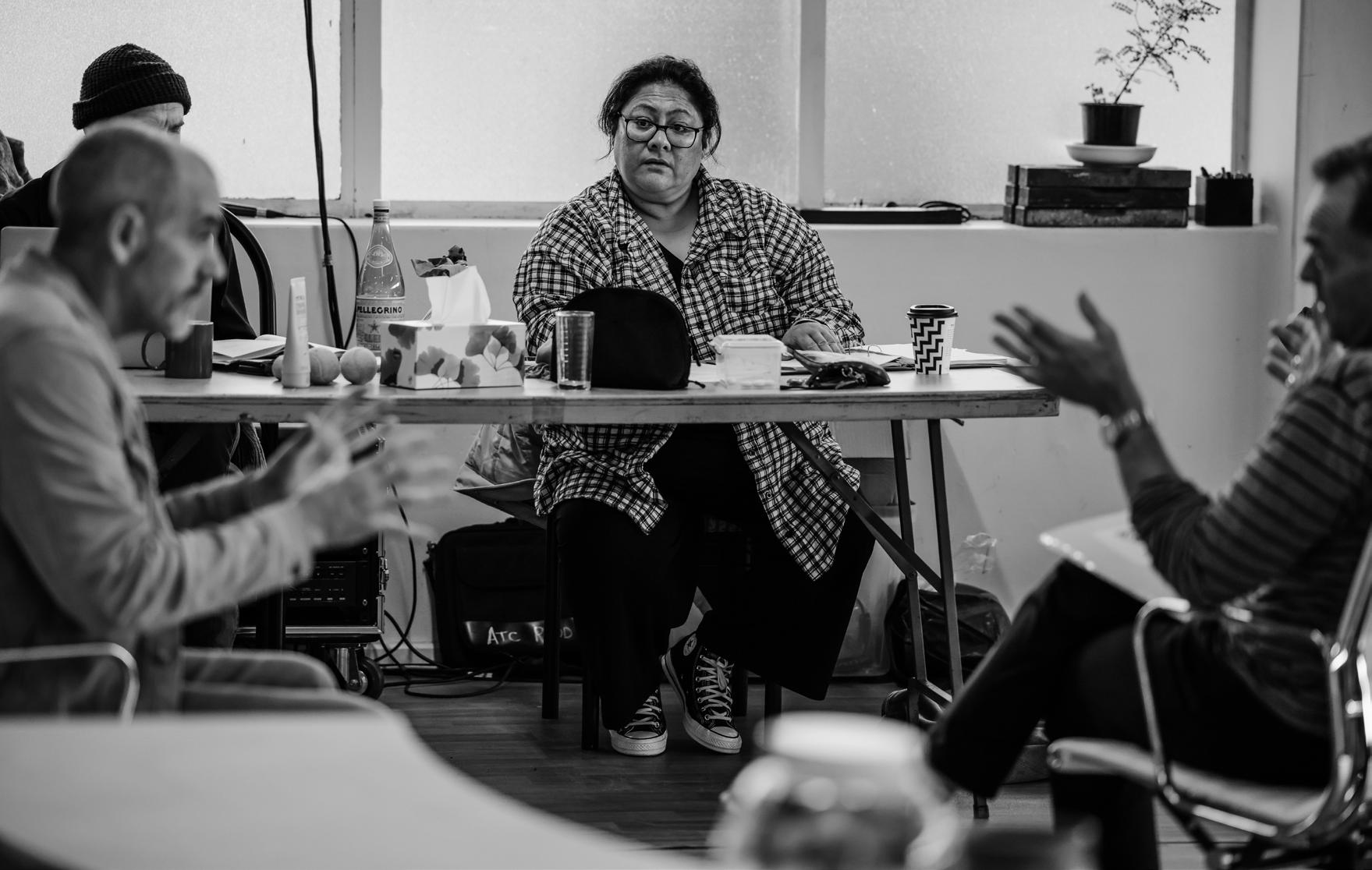
• Does it feel like a linear narrative, or does it feel like we are jumping between different times?
• How does the set help to establish different places and times? What characters help to indicate place and time?
• Why do we not get lost in the different settings and storylines? What can we always hold on to throughout the story?
19
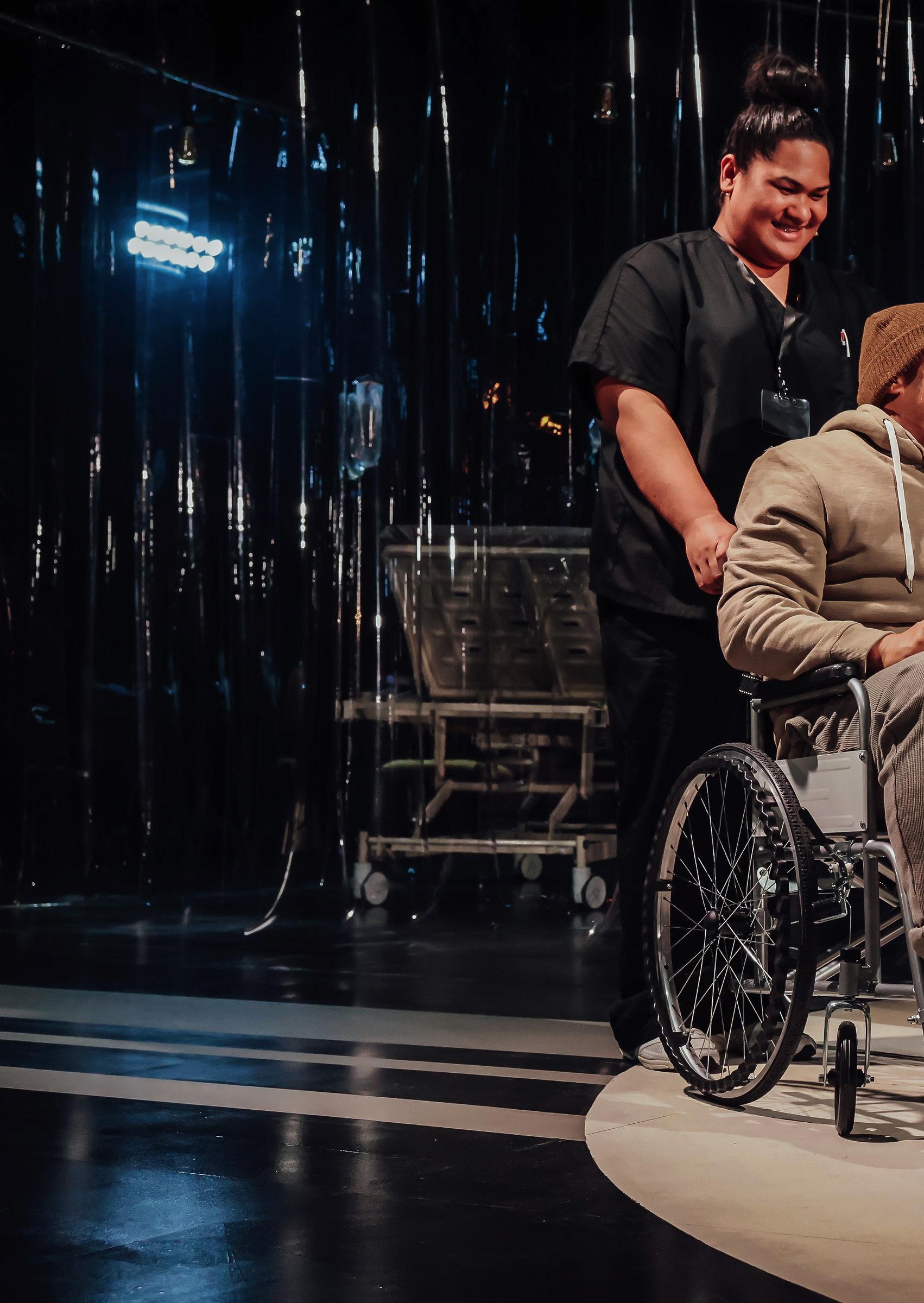
20
2021 production of Things That Matter. Credit: Andi Crown

21
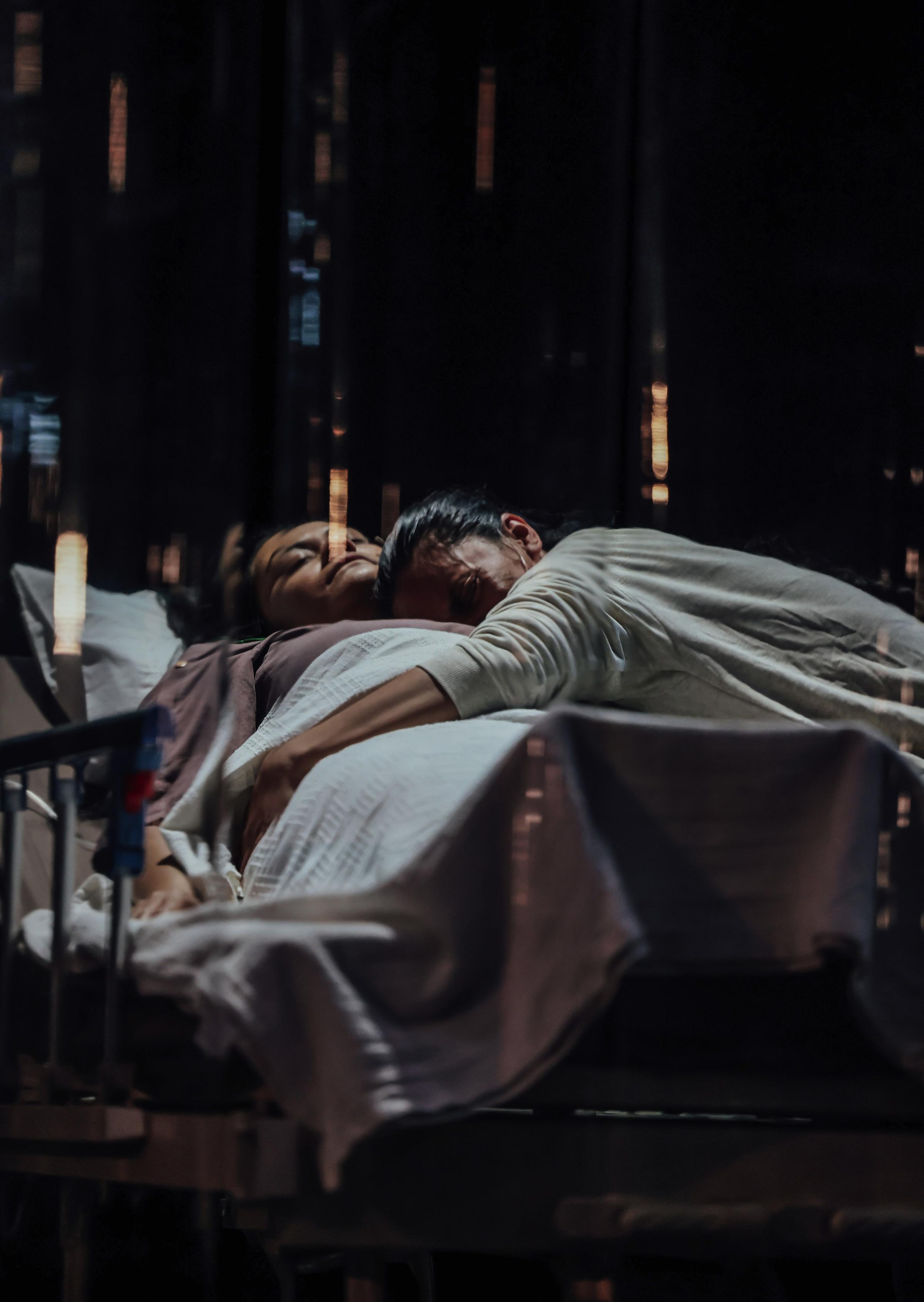
22
2021 production of Things That Matter. Credit: Andi Crown
Directing Things That Matter
We asked director Anapela Polata’ivao about the challenges and rewards of directing the ’clean canvas’ of this new New Zealand work.
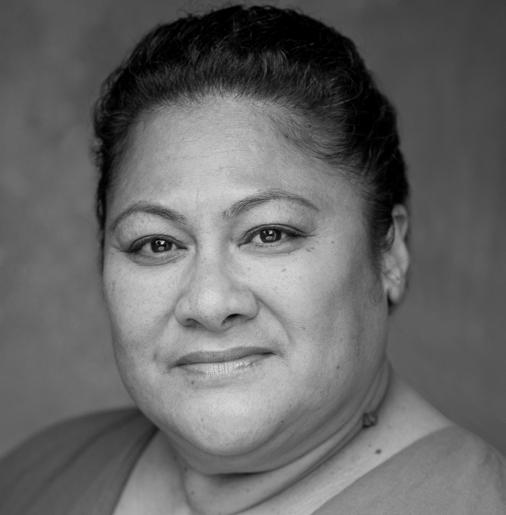
Have you read David Galler’s memoir and did that change how you directed this script?
I read the script first and then the memoir. It only deepened my understanding of what was required of the actors and myself to portray life onstage. It’s been a really good anchor.
23
When you first read the script, did you have a clear idea of how you wanted to direct this piece?
No, I didn’t. I never do with any work, I guess - there’s just a sense of possibilities. The next steps become more obvious as time goes by. It evolves into what it needs to be and I’m just one part of the puzzle in its development and destination, although I think there’s never really a set destination for any work. There’s always room for further investigation, for ‘’what else is lurking underneath there?’’ - even if it’s already had a production run. The actors are a crucial part of the process. There’s a whole range of different experiences in the room and everyone learns from what they bring to the floor. The beauty is we’re all collaborating to bring this baby home.
What sort of work did you do before the start of rehearsals and how do you think that comes into the rehearsal room?
I watched lots of documentaries, interviews, read articles on the Holocaust and Middlemore Hospital, what happens in ER, ICU etc. You equip yourself well enough to engage with actors and creative
departments to make informed decisions on character’s arcs, set and costume design, sound and music compositions. Research leads the charge in many ways, like a road map.
What are your core values for a rehearsal room?
Openness and willingness. A willingness to make offers. Respect for other people and their space. An understanding and respect for others and their processes. My hope is for actors to not feel precious about themselves or getting things wrong. Just give it a go. I value communication and creating space for people to grow and feel safe that they can.
What are the things you watch out for during rehearsal? How do you think the rehearsal room changes over time in the run up to the production?
Actors will reveal what works and what doesn’t for them in the rehearsal process. Being able to adapt to different methods of working is important and necessary. I find it strengthens you as an actor, and keeps you open to discovering
24
new ways of receiving information and for me it is just as crucial. My aim is to try to be an effective communicator for my actors - this doesn’t always work, howeversometimes I need to find other approaches to execute this better. Leading up to production there will be days where actors hit a roadblock or a wall, frustrated that nothing is working - this is all very normal and a crucial part of the process: The breakdown before the breakthrough. I think part of the role of the director is to be aware of the energy in the room. That’s why I think it’s important to take a moment to check in, see where people are at.
What has been rewarding for you as a director during this process?
I get to work with people who love what they do as much as me. And they’re amazing human beings.
What is the difference in directing a new work compared to a work that has been performed many times?
It’s challenging, I think. You’ve got nothing to pin it against because it’s never been done before. On the flip side, you’re not influenced by what’s gone before so you have a clean canvas to paint on and that’s exciting. There’s a bit more liberty for a new work.
have you found handling these in the rehearsal room?
It’s been cathartic and freeing. Sometimes it’s been healing. We’re just trying to tell this story as truthfully and honestly as possible. It’s such a courageous thing to do to not be afraid of dealing with ourselves and our human condition. I watch these actors pour everything into it, day in day out. It’s so courageous.
Who do you want this piece to connect with?
I do hope that communities from South Auckland come to see the show because I want them to see themselves on stage. That some of our stories are being told.
This play deals with some difficult subject matter around death, grief, and systemic issues in Aotearoa. How
25
Directing Things That Matter: Unpacking the Director's Concept
When you are revising for your live performance exam, you will want to unpack what you think the Director; Anapela Polata’ivao, intended to communicate through their choices. In the case of Things That Matter and its journey to the stage it is important to consider the show's whakapapa – Dr David Galler’s life experiences and writing, Gary Henderson’s play and Polata’ivao’s research and preparation as part of the director’s concept. These activities will help you brainstorm and collate your ideas, as well as providing evidence or quotes to support your explanations and discussions around the exam questions.
read through the education pack, copy out quotes from Dr Galler, Henderson, Polata’ivao, the actors and designers that you think will be useful in your Live Performance exam. Make sure you note down a short statement about why you think this quote will be useful. This could be connecting the quote to a social, historical, political, or geographical idea, something that drove acting or design choices or you have a hunch it might be powerful evidence to support your ideas in the exam.
Unpacking “Directing Things That Matter”:
INSTRUCTIONS FOR ĀKONGA:
A Glossary of Quotes: Individual Activity
In your drama book or on your device create a document called “A Glossary of Quotes.” As you
Divide into four groups, with a big bit of craft paper each. Each group will take a different prompt to use in conjunction with Polata’ivao’s interview. Discuss what she intended to communicate through her directing choices. You could also refer to anything you discussed in the previous activities as well, building on this korero.
26
Prompts:
• Research material: what research material was mentioned. Think of examples where this is brought to life on stage through design, directing or acting choices.
• In the rehearsal room: what ideas do you think were explored in the rehearsal room and how does this connect to what you saw on stage.
• The big themes and intentions: identify the themes or intentions that Polata’viao had for the piece or chose to highlight through design or directorial choices. Whose stories were being told and why was this important?
• Style and flair: can you identify a specific style or aesthetic in the way the performance was pulled together. What do you think Polata’viao intended to communicate through these choices?
You will have 10 minutes to discuss and annotate around the prompt you are given as a group. Then you will rotate around the different prompts, spending 5 minutes at each, discussing and adding your own ideas. Once you are back at your original brainstorm prompt collate the ideas into bullet points and share these back to the class for discussion. Make sure you take photos of all the evidence you produce during this activity to reference during your revision later in the year.
Extension activity:
Write a short response or create a short presentation as a group around the following question -
“What was your initial reaction to the performance of Things That Matter? How did it make you feel as a member of the audience? What have you been thinking about since?”
Performance Activity:
In small groups, discuss and choose an ensemble moment that surprised or compelled you in the performance. Break down what made that moment surprising or compelling. Think about the acting and staging decisions, structure of the scene, formations on stage and whether they are addressing you directly or the fourth wall is up. What is being communicated to the audience during this moment.
• Using the ideas from breaking down this moment, create and structure a short performance around an issue, theme or idea from your own life or world. These could be connected to the content of the play.
Reflection: How does creating a performance in the same style and structure of a live performance you have seen as an audience member help you as a student of drama?
27
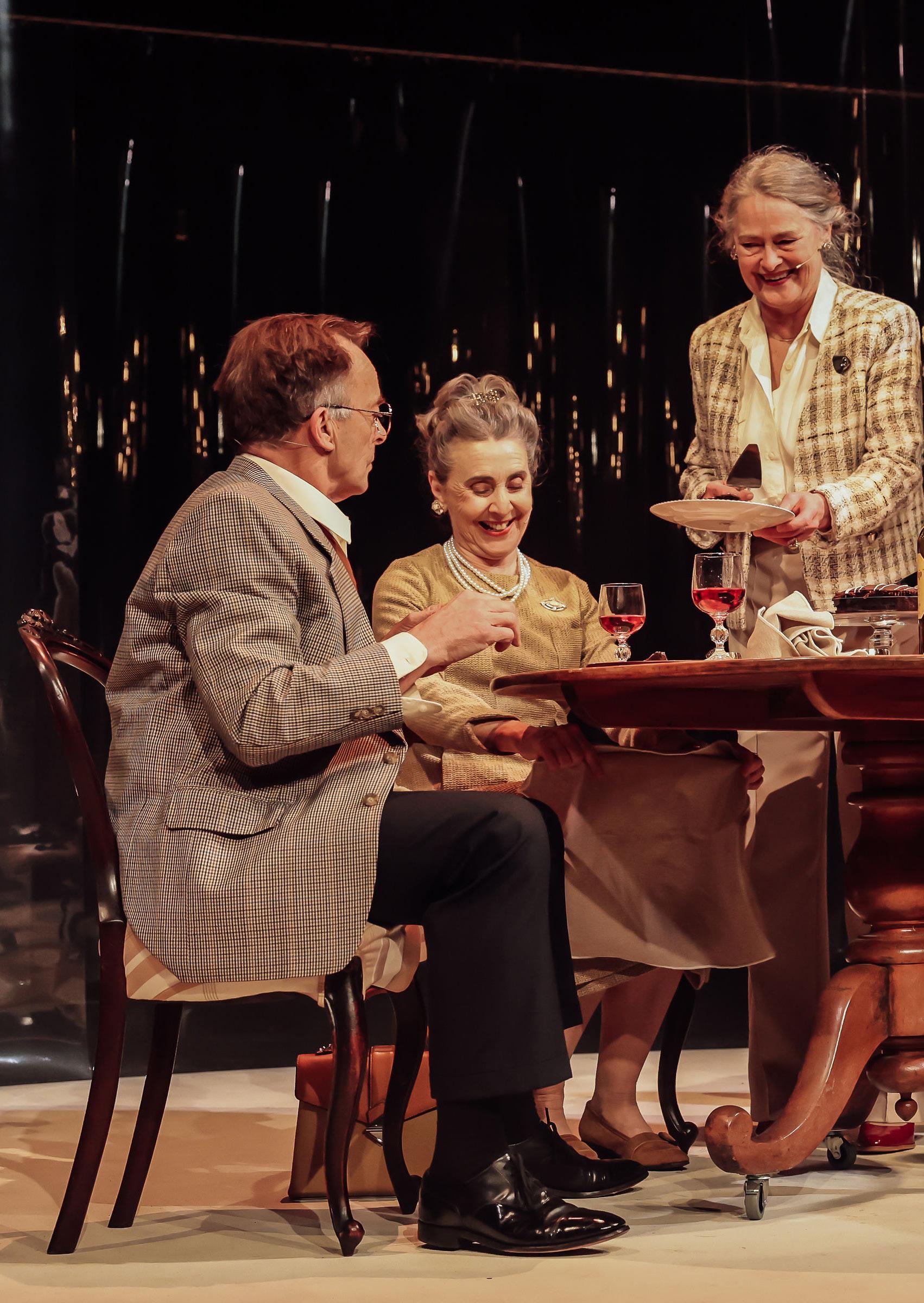
28
2021 production of Things That Matter. Credit: Andi Crown
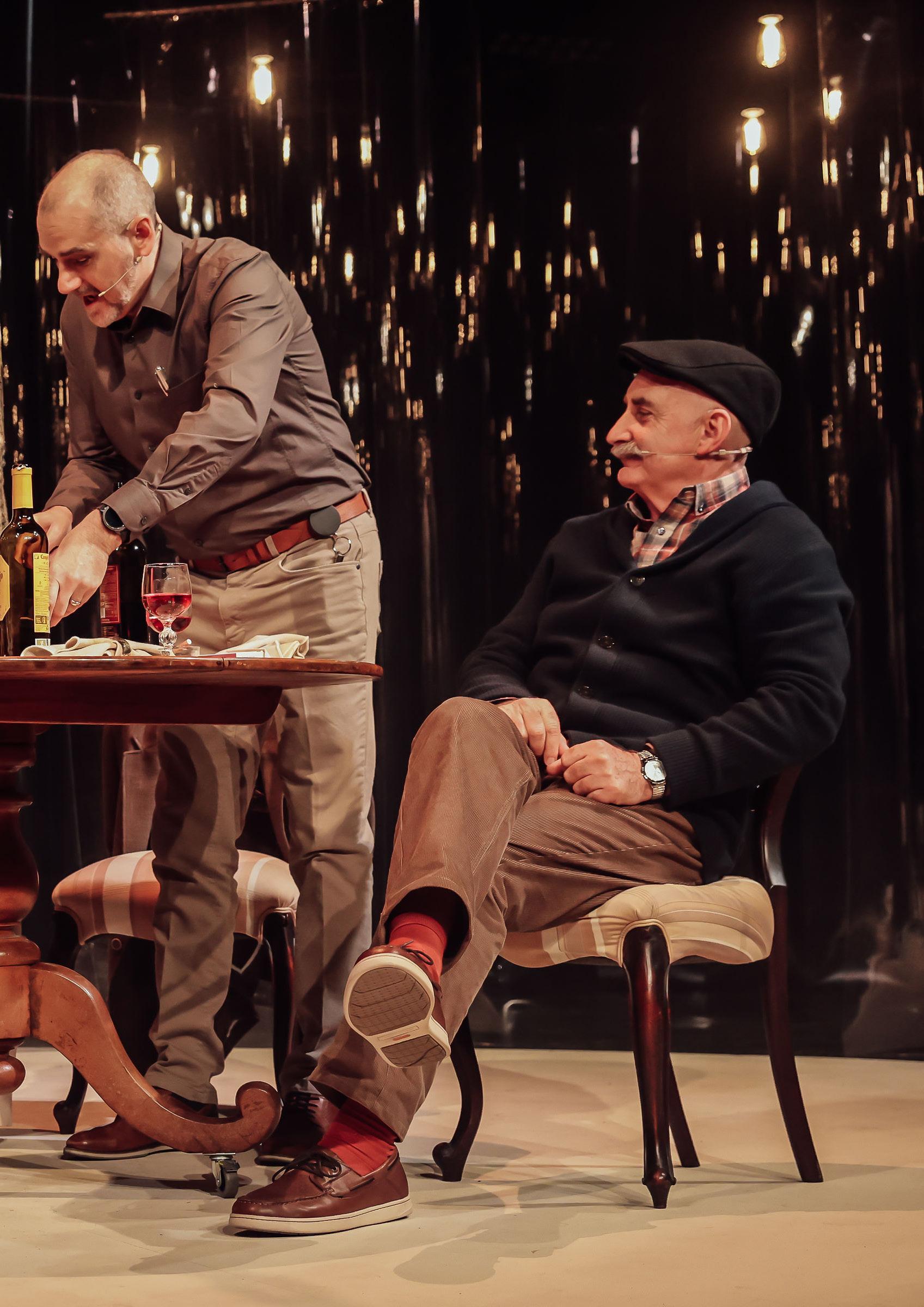
29
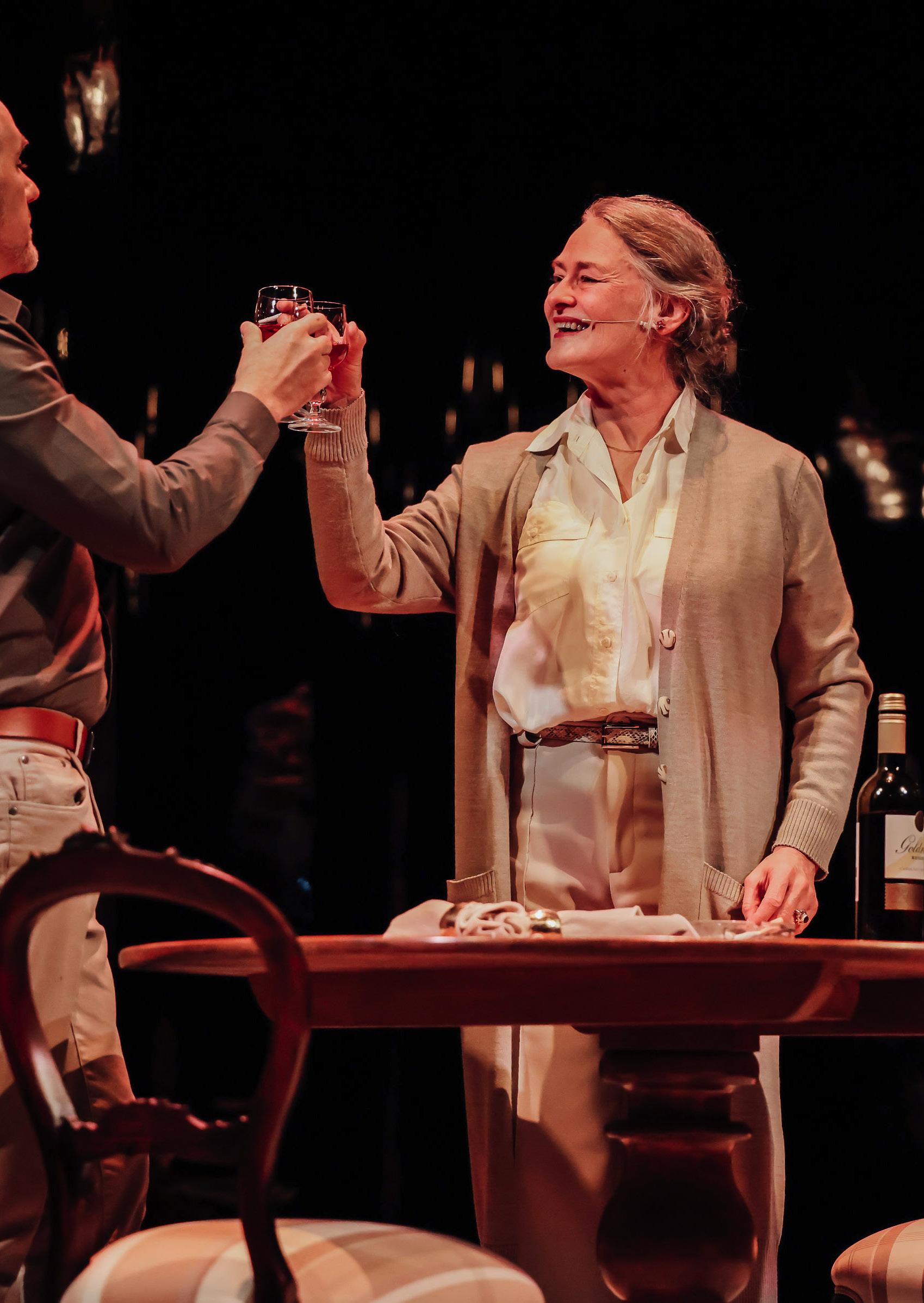
30
2021 production of Things That Matter. Credit: Andi Crown
Playing People That Matter
Actors Donogh and Shaan talk about the process of preparing for their very different roles; the research involved, the rewards and challenges of playing their characters, and their top tips for young actors.
How did you prepare to take on the role of Roza?
I spent some months researching. I have not been through the Holocaust, and I am not a Polish Jew, so there was an accent, and a different body language to think about and learn.
The internet, and YouTube is incredibly helpful in these aspects. Books, poetry, films, tv and documentaries are also great tools.
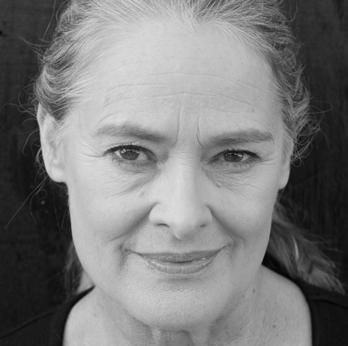 DONOGH REES
DONOGH REES
31
At various times of my life, I have read a lot about the Holocaust and seen many images. I have books at home with that info and I looked a little at those images.
On YouTube I could observe Polish Jewish women of middle age and older; their accents, their body language (which is very different from a middle-aged woman from Aotearoa), their clothing and the way they spoke.
I discovered the Shoah Institute which has been collecting and filming the stories of the survivors of the Holocaust to preserve the history. I specifically looked at women’s stories. I looked and listened. I kept certain people whose accent seemed useful in an accent folder and others into a work folder.
I began to absorb all their stories, seep them into my bones, where the horror and the pain became very normal to me and helped created part of my Roza. Your past informs your future and that is what I was after. How you react to circumstances in life is laid down when you are young, a child. We have abilities to change but some instincts - from fear, from rejection from survival under extreme circumstances - are present always if not outwardly noticeable.
I looked at moving images of Poland before the war, I saw the kinds of buildings Roza was brought up in, the kinds of people that
surrounded her before the war came, so I could consider who she was before everything fell apart.
From the script and reading David Galler’s book, I understood she was well off and an only child, so I kept the stories of women from a similar background and from roughly the same area in Poland.
I began to understand of Polish history, how often it was invaded by other countries and how the population was forced to learn other languages and behaviours whilst the invaders were in power. I learnt that Yiddish was often spoken in the Jewish quarters.
I looked at the plight of Jews in the world and how racist others were of them, how even after generations living in one place, they were often still considered outsiders and treated with contempt or suspicion. I saw how quickly they were turned upon when Hitler’s orders were put into place, and I learnt how the survivors revered the Polish people who protected them.
I also looked at lots of footage of the war and the release of people from the concentration camps, still images, and footage of the Death March as Roza talks about it.
I observed and watched footage of Jewish religious life even though Roza is not from an orthodox family, but it is part of her and her family history, so it is a part of her culture and I needed to absorb that too.
32
What are the challenges of playing Roza?
The most challenging aspects of Roza was her accent, making it real, understood by the audience and “hers.”
There are quite a few accents within Poland especially because it has been invaded and it has borders with other countries, so I had to find what worked for us and that means for the audience too. I was keen to avoid a Germanic part to her accent, but they do exist in parts of Poland. Another challenge was creating a European - not New Zealandwoman. Different cultures have different body languages and outlooks.
What are the most rewarding aspects?
A new New Zealand play about us, about colonisation within our society, about acceptance of death being a part of life. An examination of public health within that framework and in Covid times, (although the play is set in pre-Covid times, we do think about the strain the system operates under).
To work with a splendid group of people with much to give and share
with each other as people and as actors, I love that. To challenge, inform, open debates, move and share with the audience, I love that too. We (as Shakespeare says) hold a mirror up to nature....
Top tips to young actors:
Read, observe, watch theatre, look at films and tv but never lose your curiosity. Watch how we as people operate and react to stuff. Now is an incredibly interesting time to be seeing all that.
If you can see a show more than once, do so as you can see it alter and change in many subtle ways and how an audience affects the performers.
If you really want to be an actor you may find yourself hanging out at the Basement (or your local theatre), so introduce yourself to actors that hang out there too. We were all in your position once and so we understand how awkward you can feel but generally we are very open and welcoming.
33
How did you prepare to take on the role of young resident doctor, Dev?
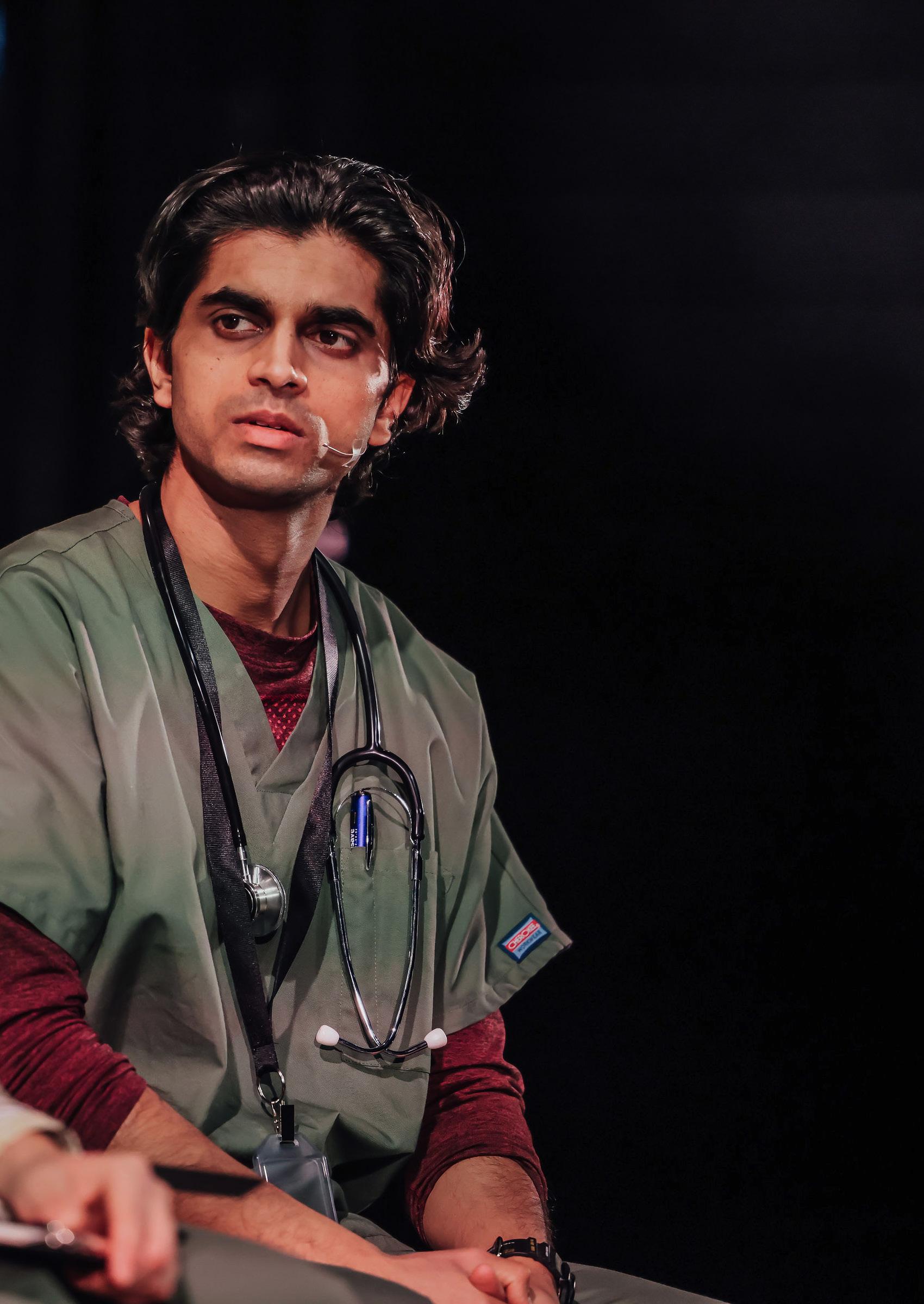
I tried to do as much research as I could on the world and the circumstances.
I'm lucky to have a couple of friends who work the same (or similar) jobs as Dev. I reached out to them and picked their brains on what their experience has been like. It gave me a huge insight into the world of the play, and I was able to imagine what it would be like if I was in their shoes.
On top of this, I watched a bunch of medical drama clips online as well as reality shows set in hospitals, which was great for seeing the settings from the play in action. We were also lucky enough to have a tour of the ICU at Middlemore Hospital which was a real eye-opener.
34
2021 production of Things That Matter. Credit: Andi Crown
What are the challenges of playing Dev?

The most difficult thing was getting my head around all the moving pieces of the play and figuring out how Dev fit into it all. It can be easy sometimes to forget that we are just one piece of the puzzle (an important piece though). Our characters serve a specific purpose and although we may feel or think that we are being truthful to the character, our offers may not always serve the overall message of the piece. I found that by taking a step back and referring to the script I could see the bigger picture and better deliver the story of the play.
What are the most rewarding aspects?
One of the most rewarding things about playing Dev is that I have the honour of portraying what so many of my peers, who are now doctors, are going through in their line of work. Their jobs carry an immense amount of responsibility, and I am only tapping into an ounce of it. My hope is that we do them and other medical professionals’ justice in our portrayal and that the audience comes away with a greater appreciation of their contribution to society.
SHAAN’S TOP TIPS FOR YOUNG ACTORS
Have fun! If it's something you're passionate about, go all in and try to remember why you're doing it in the first place. You are never too old to play.
35
Playing People That Matter
Unpacking Actor’s approach
When you are thinking about an actor's performance to write about in an exam setting you will want to build a comprehensive profile of how they used their body, voice, movement and use of space. Details about motivation, ideas or symbols they highlighted and moments of subtext that pointed to themes or relationship dynamics. You will want to link these details to specific moments in the performance, describing what was happening on stage and linking to big ideas and wider context. These activities will enable you to build a kētē of information about characters you found compelling or who were integral to the narrative:
COMPREHENSIVE ROLE ON THE WALL:
Draw an outline of your character or your teacher may give you an outline to work with. You will want to have space on the inside of the outline and around the outside. Put the characters age and approximate age in the top right hand corner of the page. Then use the following prompts to comprehensively annotate inside and outside of the outline: Inside:
• Motivations and how these stay the same, grow stronger or change throughout the performance
• Internal emotions and how these develop or change throughout
• How they feel about other characters in the performance and how this is communicated through subtext - you could include quotes
• How they see themselves.
36
Outside:
• The characters purpose within the story
• Personality, key characteristics, how they communicate with people, how they come across to others
• Their relationships and the strength of those connections
• Their behaviour and what externally motivates them
• Style of movement, use of voice, and defining use of gesture and body
• How they use space to demonstrate power
• How they are perceived by other characters
• Important statements or quotes from the performance or from the interviews in this education pack.
Join up with a peer and discuss how your understanding of those characters has developed or expanded.
EXPLORING DONOGH REES AND SHAAN KEESA’S INTERVIEWS, AS WELL AS “AN ACTOR PREPARES”:
• Read the interviews
• Circle or highlight ideas that interest you or provide insight
• Get into pairs or small groups and share what you have circled or highlighted and explain why. Make notes or a brainstorm to record your ideas
• Choose a scene that highlights either Rees or Keesas’ characters and connects to ideas you have identified. As a group brainstorm how you might talk about the scene, describing what was physically happening on stage for that character. You could present this to the rest of the class as a: (make sure you save a copy of whatever form you complete this task in)
• Fleshed out brainstorm
• A verbal presentation with written prompts
• A written response
• Acting out a scene and explaining what you are doing.
37
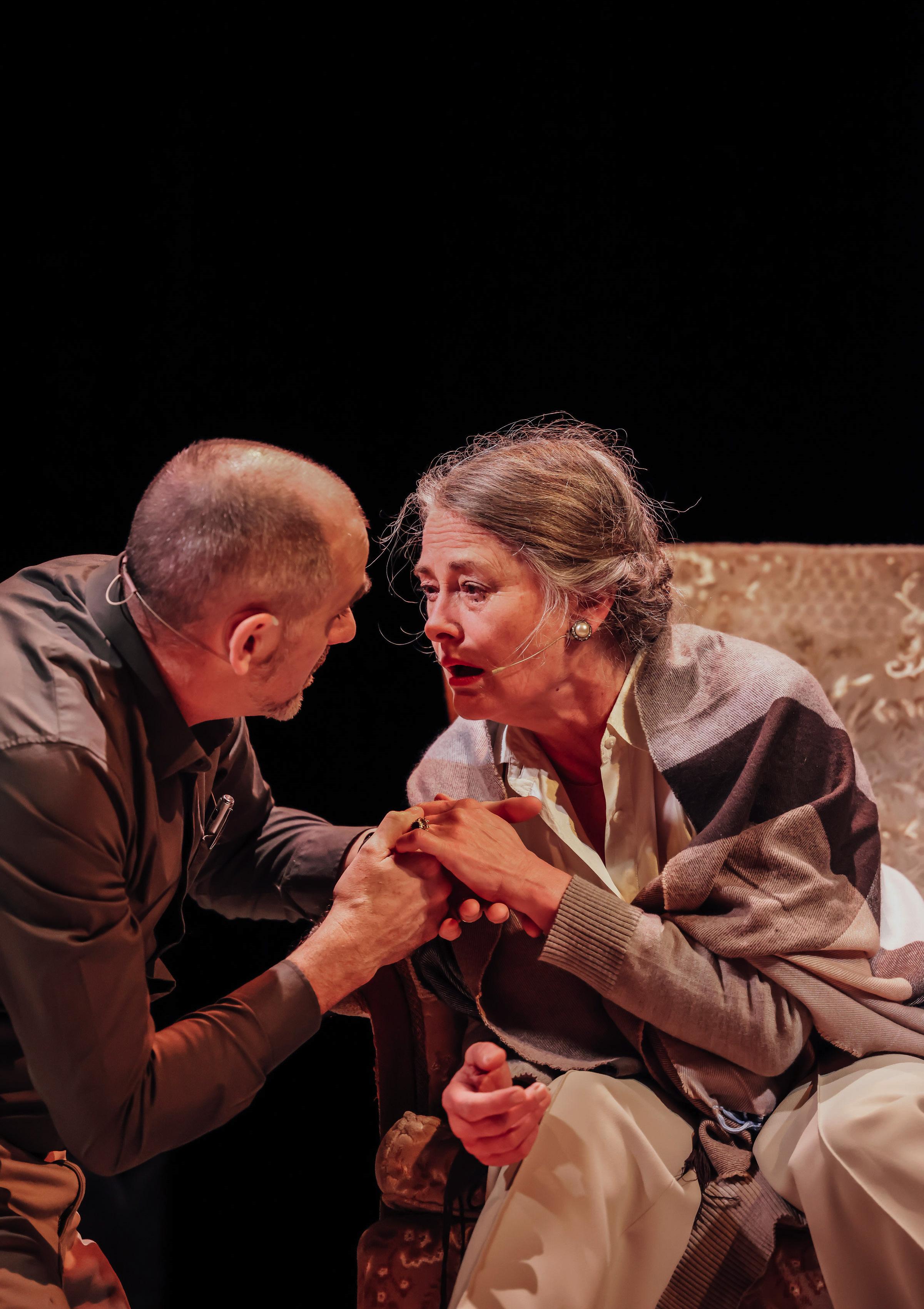
38
2021 production of Things That Matter. Credit: Andi Crown
An Actor Prepares
Donogh Rees shares some valuable insights about preparing to play a role in a scripted play.
The first thing you do as an actor is read the script.
While you are doing this you have two elements running through your head at the same time. Firstly, there is you experiencing the journey of the play, the overall story - like the audience first seeing it. Then there is the actor in you noticing the audience in you experiencing the journey. Noticing, for example, the unexpected within the story, you will clock the audience part of you feeling that and, in your head, you go, “I must remember that first reaction” so you can recreate that for the audience.
You observe where you were moved, or surprised, where you laughed out loud, or where you wept. Whatever you are observing, the audience in you is remembering that first impact.
This is because the story telling is what we are doing, and the audience is who we are doing it for.
Next, the actor part of you is observing your character’s particular journey and how they affect the story or other characters within it. You observe the way your character speaks, what language they use, how they use it, what sparks their responses to the given situation or their responses to what other characters say or do to them. These are clues to who they are and how they think, and it also helps in the learning of lines.
You note what they say about others in the play, or perhaps their comments of the world outside the play, political or social.
You note what others say about your character - but that doesn’t necessarily inform you about who your character is, if for example they dislike your character because you are related to someone they hate or has done damage to them (not what you have done but who you may know).
Everyone has prejudices so they are interesting to note too and may be true about your character, or not.
39
Production Design: Lighting, Set, and Projection
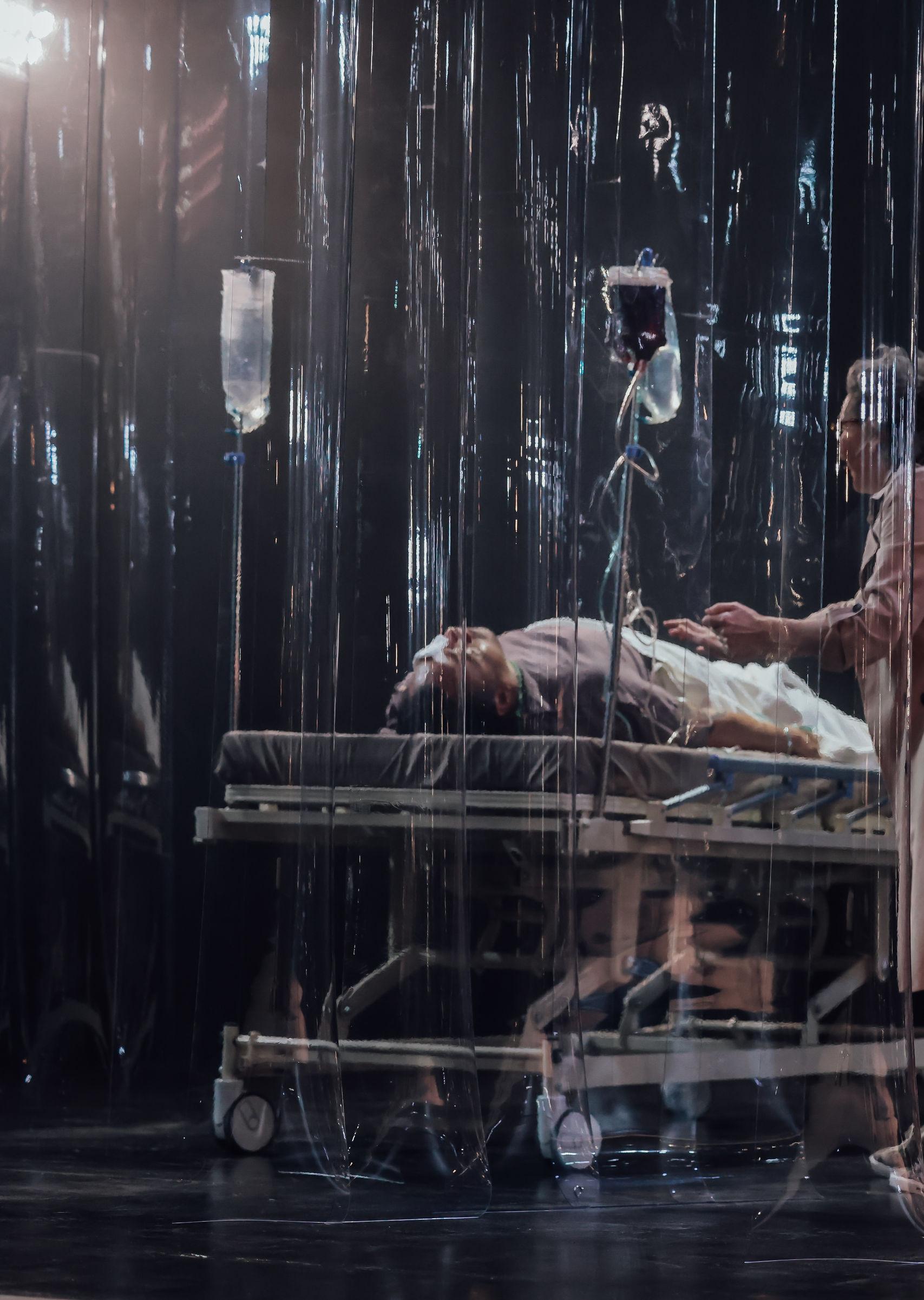
40 2021 production of Things That Matter
by Filament Eleven 11; Rachel Marlow and Bradley Gledhill
.
Credit: Andi Crown
When it came to our design, we first wanted to create the feeling of the physical locations: Middlemore Hospital, Raf’s home in Wellington, and the Minister’s office. We wanted to be able to go between those locations really easily, as though in a memory; because that’s what the play is: a recollection of memories.
We wanted it to feel really ethereal, and a little bit heightened, and quite a beautiful experience that these stories just kind of tumble out of. So the main design concept is that there is a large circle in the middle of the stage that’s used as several different things: a living room; a heart; an operating theatre; and a reception area. So that’s really like the heart of the show, it revolves around that. There are also various design items that fly in above it: there is a lab that flies in; and there are some monitors with heart rates on them, that happens in the left and right in the wards, if you will. We also have a large painted floor that resembles the lino in a hospital, and it has striped markings on it, which is also a reference to New Zealand artist Ralph Hotere, whose work
Anapela was really interested in. His work was a major jumping-off point for the colour palette of the show, which is actually a really earthy colour palette, rather than the

41
green and cold palettes of medical dramas; we were really interested in flipping that by having a really earthy look, and that palette carries through to the costumes, too. Ralph Hotere also does a lot of line art, so the floor pattern on the stage is kind of inspired by his work and real hospital corridors.
Hotere’s work also inspired the central circle - and it became just that, a space where everything happens, and everything moves in and moves out. And then from there we investigated the plastic of hospitals. So there is plastic everywhere, like hospital plastic but transparent; it’s very refractive, and it takes projection, so we also do some projection on it.
For the Minister’s scenes, there’s a whole lot of venetian blinds that fly in, and at various points we also bring them in to close the space down and have the nurse’s station in the middle.
In its entirety, the set is almost the whole width of the ASB Waterfront Theatre stage, and it goes all the way back, so it’s quite a workout for the actors to walk it!
With regard to the details, Anapela didn’t want it to be hyper-realistic, with every single prop and set item from a hospital represented on stage; so we only have just enough to tell the storythe furniture, props and costumes are only what’s necessary and real enough for the actors to interact with, and they have this layer of cohesion across them.
We also looked at lots of architecture because Middlemore Hospital is a real place, and Auschwitz is a real place, so we wanted to be evocative of that. And then we looked at the similarities between those two places; Middlemore has a train station right next to it, so it has that train-station feel. Another inspiration was oldschool medical lecture operating theatres, whose seating rows went up quite high, and everyone in the seating block looked down to the centre, watching procedures or operations - not dissimilar from the audience seating at ASB Waterfront Theatre. Other imagery we looked at was veins in nature, organic growth, and that’s kind of the rib cage around the heart of the story.
So we used set, lighting and projection and combined them to use as one storytelling device. With lighting and projection in particular, it was important to us to use those elements to create movement in the piece, so that this collection of memories would be an active recollection or storytelling; so taking those memories and making them active, not passive. Also with the staging, it’s a company play, a collaborative work; so we’re trying to layer in the company moving through the space, and transforming the space, and we’re trying to create a space that allows them to do that. This is a pretty big part of the show, because the play is largely about the collective agreement we have as a society.
42
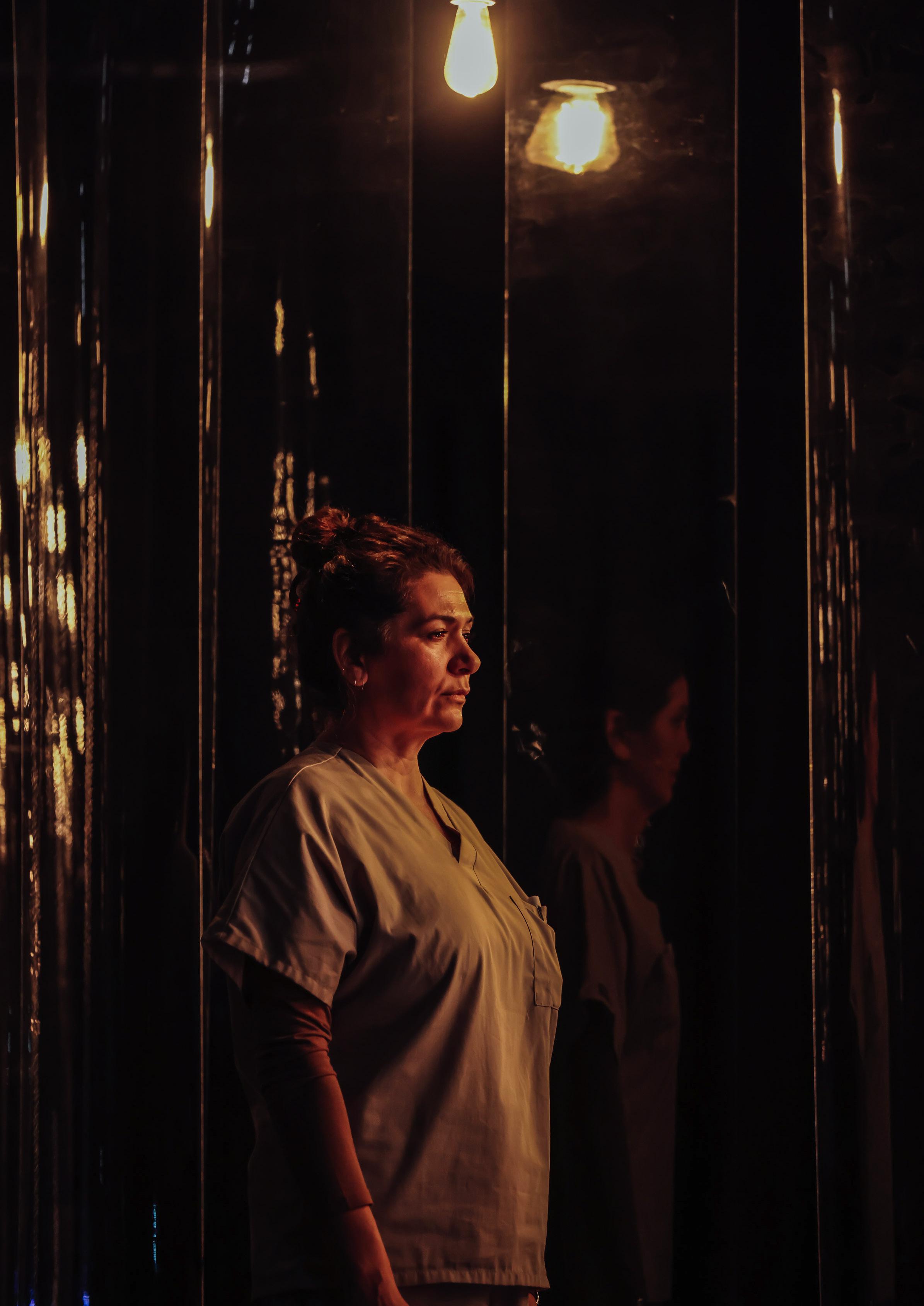
43
2021 production of Things That Matter. Credit: Andi Crown
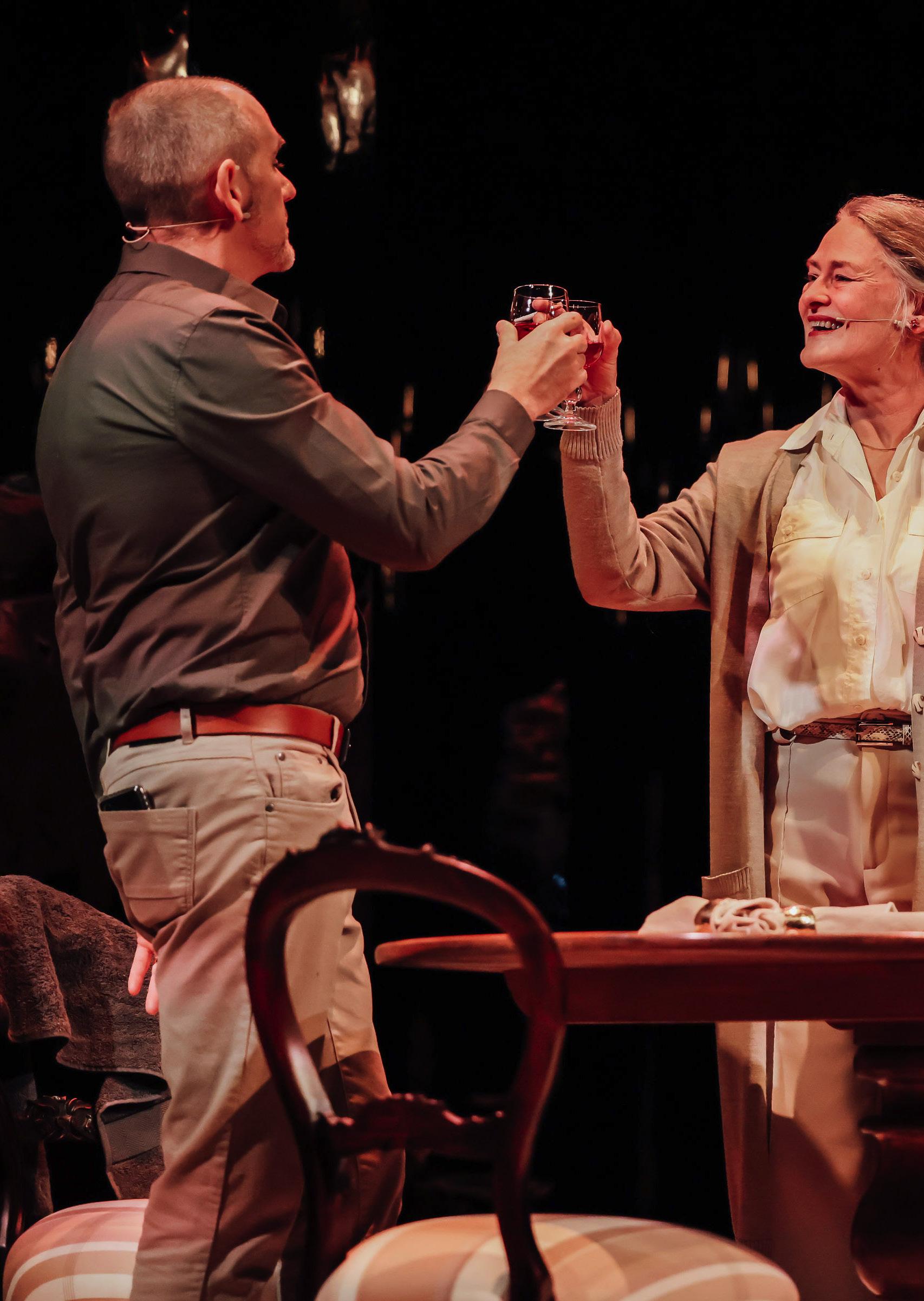
44
2021 production of Things That Matter. Credit: Andi Crown
Sound, Music and Lighting
Discuss how the sound, music and lighting helps this play to feel realistic and/ or theatrical.

• Are there any scenes where the sound, music or lighting sticks out from the rest? If so, why do they stick out and what do they convey? How different would this play be if there was no sound and a single lighting state?
• How do these elements get used to create a sense of place and mood for the action?
• Are there any sounds or pieces of music that repeat? What are they used to represent? How does the music affect the audience’s relationship to the characters?
• What do different lighting states indicate about what is happening in a particular scene? What are the differences between harsh and soft lighting?
• What role does lighting, sound and music play in scene transitions?
• If you were the sound or lighting designer, what would you need to consider to make sure that you bring this story to life through sound or light?
45
Exploring Design Choices
SKETCHING AND ANNOTATION
Sketching and annotation are an important part of your exam responses, often they can add information or allow you to expand on your ideas in your written answers. Use the following prompts to create a bank of detailed sketches and annotations:
Prompts:
• A moment where the set was used by the actors to create impact. What other technologies were at play?
• A moment where technology was used to create mood or atmosphere.
• A moment where a character was isolated. How did the use of technology impact this moment?
• A moment where use of technology revealed new information.
• A moment where the ensemble was on stage. What impact did the technology have on the tension of the scene?
TELLING STORIES THROUGH DESIGN
When we are thinking about the design or technological elements of a show, we need to explore how this supports the story being told, heightens atmosphere and tension or creates mood. Things That Matter tells a family story and is also based in a busy hospital, therefore, the design and set need to be multifunctional and play an integral part in communicating the narrative.
46
Make notes about the following design/technology choices, using the questions as prompts to think further. Focus on the way the technology helped tell the story of Things That Matter. You could do this in pairs or small groups:
Set: What did it look like? What material was it made out of? What did it represent? What function or purpose did it play in telling the story? How did it create intimate family settings and the landscape of the hospital?
Lighting: Describe in detail lighting effects that highlighted important moments in the story. How did lighting build mood, tension or create atmosphere? How did lighting interact with the set? How did it create different environments?
Sound: Describe how sound impacted the way the story was told. Choose moments from the performance where sound drove the narrative forward or highlighted an important idea or character. How did lighting and sound interact to create mood, tension or atmosphere.
Costume: Describe the materials and colours used for each character's costumes. What place and time did the costumes point to? What did the costumes tell you about the character, their history, their function within the performance and their connection to one another?
Props: Describe the props used within the performance. How were they connected to the story the play was telling? Did certain characters use specific props to support their function within the play.
47

48
2021 production of Things That Matter. Credit: Andi Crown
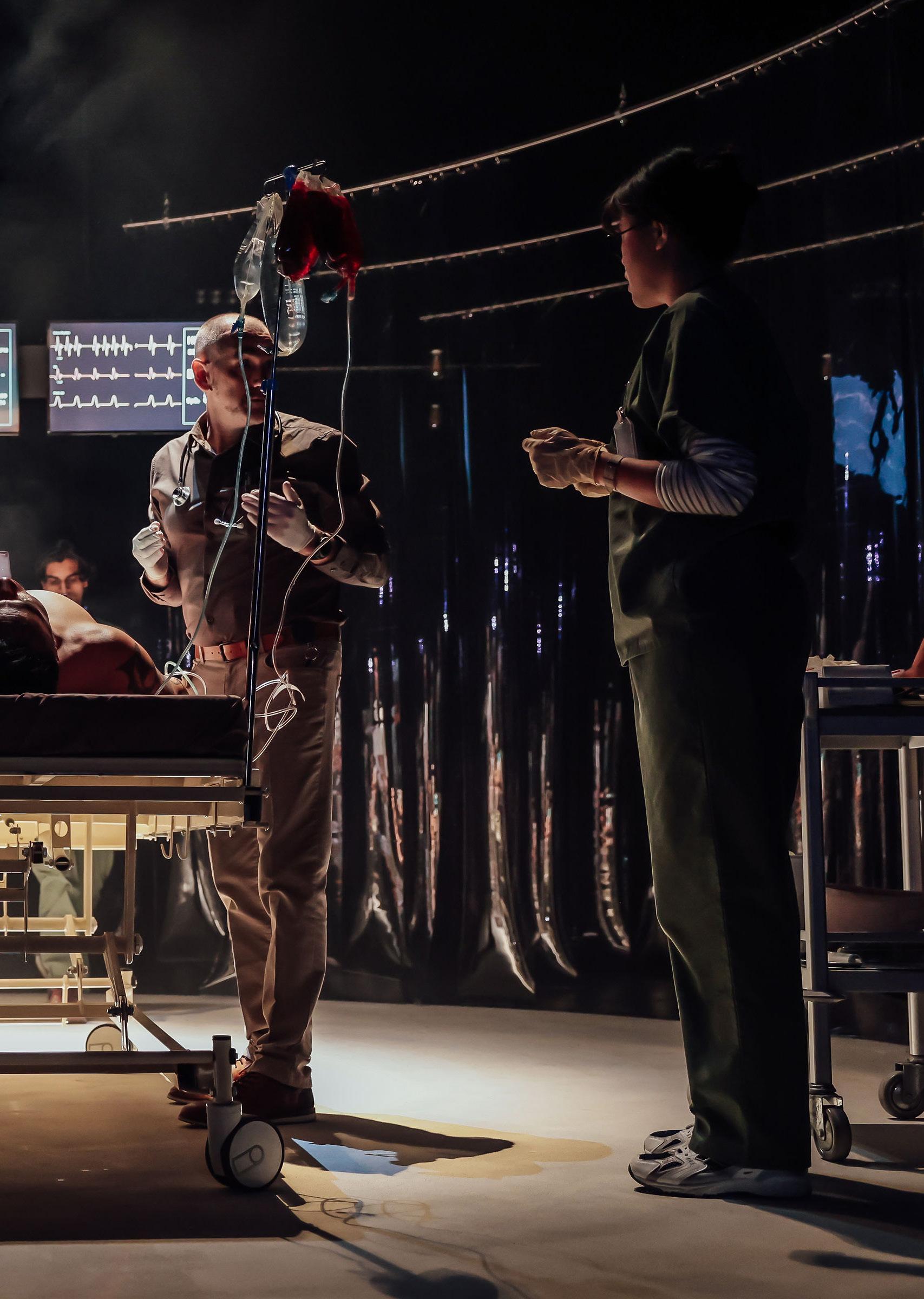
49

50
2021 production of Things That Matter. Credit: Andi Crown
Themes
Empathy and compassion are at the core of this play and explored through every theme.
VIEWING ECONOMY AND SOCIETY HOLISTICALLY
From the beginning of the play, it is clear the overcrowded and underfunded hospital is under financial strain. The budget for staff biscuits is cut and even Rafal’s beloved swimming pool is closed. The appearance of toxic black mould is used as a motif to explore the hospital’s slow decline.
Budget constraints are also explored in the meetings between Rafal and the Minister of Health. The Minister has a focus on the economy and how to keep it stable while making small changes to improve the healthcare system. Rafal has a more radical stance and believes we need to completely overhaul the health system. He believes the system is
fundamentally flawed as many of the illnesses people present with in hospitals could be prevented through a more holistic approach to welfare in New Zealand. This discussion of financial risk versus return is at the core of each scene between these two characters.
SYSTEMIC RACISM
The play explores systemic racism through the issue of obesity in Aotearoa and individual struggles with stereotypes and microaggressions in the fight between Ana and Edie. Edie tells Ana she is frustrated when she cannot carry out a simple procedure on Seleni, a Samoan patient who is obese. Ana is angry with Edie for stereotyping Seleni and all Samoan people as being obese. She tries to explain to Edie that the issue is more complicated and requires a holistic view. This conversation is further explored In Rafal’s meetings
51
with the Minister of Health about improving regulations to minimise obesity, especially in South Auckland.
MEDICAL RESPONSIBILITY
Early in the play, at dinner with Roza and the Nagels, Rafal discusses how medical mistakes are handled by hospitals, which sets up the question of who is to blame when a mistake is made.
This question is then further explored through the patients who come into the hospital. When Chris the cyclist is pumped full of blood, it seems like he won’t make it and the doctors have a frank conversation afterwards about whether it was the right choice to use all their resources on him if he won’t pull through.
Later, when Seleni’s amputated leg is cremated, her mother Tusi is upset as Samoan culture does not encourage cremation and the medical form that she signed was not clear about what would happen to the limb after surgery. The scene where Rafal, Dev and Edie meet to resolve the issue with Tusi highlights the vital importance of listening to patients and their whanau, and of doctors taking responsibility for their mistakes.
This responsibility weighs heavily on the staff, as seen in the toll of long shifts on Dev. Near the end of the play Dev and Rafal discuss medical responsibility and Rafal urges Dev to learn to trust his instinct and his medical experience. Things That Matter is a commentary on the flaws of the medical system as well as the humanity of the doctors and nurses who work extremely hard to save lives.
52
Things That Matter is a commentary on the flaws of the medical system as well as the humanity of the doctors and nurses who work extremely hard to save lives.
COMING TO TERMS WITH LOSS
Loss is explored through the three patients' journeys at Middlemore Hospital. Rafal and the medical staff must decide when to tell each family about the difficulties to come for their loved ones. The medical staff help each family to understand how to manage the steep road to recovery. One of the major battles for each family is finding a way
to accept their grief by letting go and finding peace with what has happened. At the same time Rafal is processing the loss of his father Leon –who appears as his conscience throughout the play – and coming to terms with the inevitable loss of his terminally ill mother. By the end of the play with Roza’s passing, he sings the traditional Jewish song, the Mourner’s Kaddish, to help to let her go.
EXTENSION ACTIVITIES
In groups discuss the themes of the play
• How are they relevant?
• Do they connect with you today?
• Can you see other themes emerging from the play?
53
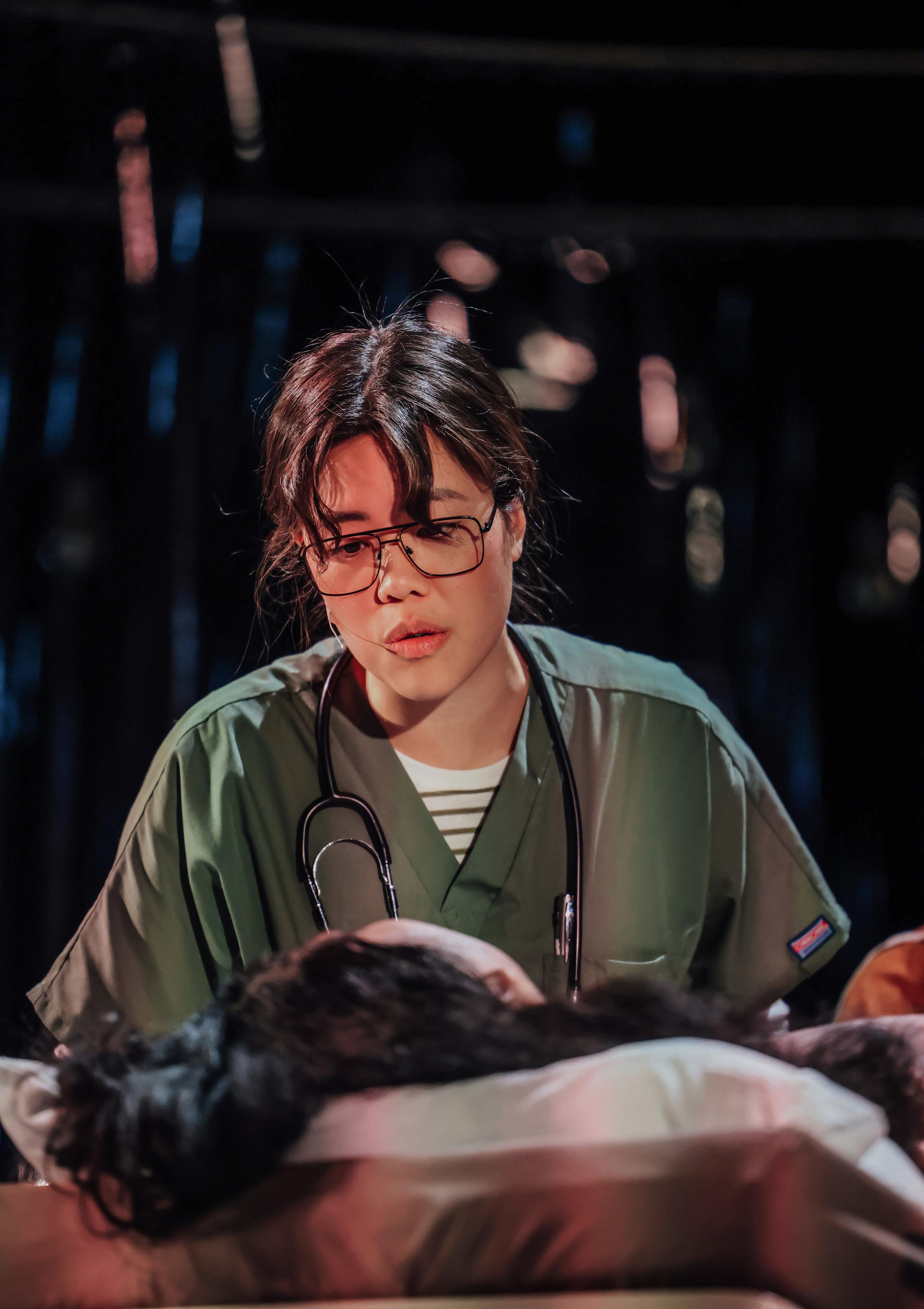
54
2021 production of Things That Matter. Credit: Andi Crown
What Does a Healthy New Zealand Look Like?
Laura Barron looks at the issues facing Aotearoa’s health system today
“A huge, expensive, tragic and entirely preventable waste of lives.” Raf’s assessment of healthcare in Aotearoa comes after working in one of the country’s busiest hospitals for over 30 years.
Systemic racism, under-funding and policies that are geared towards a privileged few – this is all contributing to a system that, as Raf puts it, is “haemorrhaging money and getting nothing.”
Funding has become a massive issue in New Zealand healthcare.
The population is ageing – and with age comes disease. Total health
expenditure currently stands at $24 billion.1 And yet hospitals continue to be under-staffed and under-resourced, with a review by the Treasury finding one in five government-owned health assets were in poor or very poor condition.2 As instances of cancer and other age-related diseases rise, we need to fund more treatments, and this all requires increasing amounts of government money.
Systemic racism means that age-related illnesses are occurring earlier in Māori and Pasifika. Life expectancy for Māori is seven years
55
lower than a non-Māori/non-Pacific person, while 65 per cent of Pasifika in New Zealand are obese compared to 31 per cent of Non-Māori/NonPacific.3 Diabetes, high blood pressure and heart disease are strongly linked to obesity, while poor quality, leaky homes cause lung infections.
The real disease is poverty
These illnesses cost huge sums of money to treat, and yet as Raf points out, they are entirely preventable. In the play, Raf talks to the health minister about how
healthy eating and improving housing standards are all ways to create a healthcare system that doesn’t just treat illnesses but stops them from ever happening in the first place.
Likewise, a healthcare system that understands the needs of the many different cultures that live in Aotearoa today is essential. We see many problems with cultural understanding throughout the play – culminating in the cremation of Seleni’s limb, which goes entirely against the world view of tagata Samoa. When stressed and underfunded healthcare professionals are
many fast food joints are located in economically deprived areas, saying that “the real disease is poverty.”
Systemic racism means that more Māori and Pasifika live in economic deprivation in New Zealand, which in turn is causing significant health issues.
We can prevent these issues through stronger government policy. Laws to reduce sugar consumption and the number of fast-food outlets, increasing education in
unable to understand their patients’ needs, it becomes even harder to overcome the health issues facing Aotearoa.
What does a healthy New Zealand look like? It’s a question Raf poses early in the play and throughout we are shown what a healthy New Zealand does not look like. A healthy New Zealand does not see certain groups over-represented in all the worst statistics, not just in healthcare
56
“A healthcare system that understands the needs of the many different cultures that live in Aotearoa today is essential.”
but also poverty, housing, and imprisonment. It is not one where stressed and overwhelmed healthcare professionals must treat increasing rates of disease, instead of having policies that prevent those illnesses from happening to begin with.
The Simpson report, which Raf urges the Minister to read, was released in 2020, and set out its vision for a healthy New Zealand. It recommended sweeping changes to healthcare in Aotearoa, including increased emphasis on disease prevention and overcoming systemic racism through the creation of a Māori health board. The current government recently announced it would implement the Simpson report’s recommendations – could this be the first step towards creating a healthy New Zealand?
1 https://www2.deloitte.com/nz/en/ pages/2021-government-budget/ articles/health.html
2 https://www.stuff.co.nz/ national/115236249/healthcare-in-newzealand-a-victim-of-its-own-success
3 https://systemreview.health.govt.nz/ assets/Uploads/hdsr/health-disabilitysystem-review-final-report.pdf p.20

57
Themes and What does a healthy New Zealand look like?
Using “Themes” and “What does a healthy New Zealand look like?” pages, explore the ideas highlighted. You could use the following activities to help you unpack these ideas and connect them to the answers your will eventually write in your exam.
Brainstorm: Divide the class into five groups and unpack each of the themes, with one group focusing on “What does a healthy NZ look like?” Once you have written everything you can about your theme or focus, rotate around all the groups adding further information or ideas. You could use the following prompts to guide your thinking:
• Where did you see this theme or idea presented in the play? A specific scene, character or design choice. Describe in detail.
• What is challenging about this theme or idea considering the subject material? How does it link to what is going on in the world today? Describe in detail
• Quotes or scenes from the play that support or exemplify this idea.
58
Practical activities:
• Use what you have unpacked in your brainstorm as a prompt to devise or improvise a scene.
• Can you link the themes or ideas to a theatre form? Make a table of the features and how they appear in the performance.
• Sketch the set and annotate how technology was used in a moment where one of the themes is highlighted by the directorial and design choices.
• Write a personal response to the play and the ideas/themes.
• Write a short essay on how Polata’viao presented a theme or commented on the state of the medical system in a specific moment in the performance. Discuss the choices you think they have made, what was physically happening and use quoted evidence from the Education Pack to support your answer.
• You might choose to do this practically as a presentation, podcast (using voice notes on your phone) or a performance based discussion.
59
Glossary of Medical Terms
BP stands for Blood Pressure
ED stands for Emergency Department
GSC stands for Glasgow Coma Scale, which measures the level of consciousness of a patient. There is a checklist that gives points for eye, verbal and motor response. The scale ranges from 3 -15 with 3-8 indicating a severe head injury.
ECG stands for Electrocardiogram, which detects cardiac abnormalities by measuring the electrical activity generated when the heart contracts.
CT stands for Computed tomography, which is a scanning technique that combines a series of X rays taken from different angles around the body and then a computer processes these into more detailed cross sectional images of
bones, blood vessels and soft tissue.
Echo stands for Echocardiogram, which is an ultrasound test that examines the structure of the heart to check how it is functioning.
Nec fasc stands for Necrotizing fasciitis, which is a flesh-eating bacteria that has a sudden onset and spreads rapidly resulting in the death of soft tissue. Symptoms include red or purple skin, fever, vomiting and severe pain.
Cellulitis is a common but serious bacterial skin infection that usually affects the lower limbs. It usually occurs because of a break in the skin that allows the infection to enter the body. Left untreated, it can rapidly become life threatening. Symptoms include red areas of skin, swelling, fever, blisters and severe pain.
60
Retroperitoneum is a space at the back of the abdomen, which includes the kidneys, pancreas, parts of the rectum and parts of the stomach and colon.
TP stands for Transfusion Protocols, which refers to the rapid administration of large amounts of blood products to manage haemorrhagic shock.
FFP stands for Fresh Frozen Plasma is made up of a mixture of water, proteins, carbohydrates, fats, and vitamins and tends to be used when a patient’s blood is not clotting.
Platelets are tiny blood cells that help the body form clots to stop bleeding. When a blood vessel is damaged, a message will be sent to the platelets that then travel to the area and start to actively repair the damage.
The Aorta is the main artery that carries blood away from the heart into the rest of the body.
Noradrenaline is both a hormone and a neurotransmitter. It functions to mobilise the body and brain for action by increasing alertness, promoting vigilance, enhancing memory and focusing attention.
Sinus rhythm is necessary, but not sufficient, for normal electrical activity of the heart.
Cardiac arrest is an abrupt loss of heart function when blood stops pumping around the body.
Full toxicology screen is a test that determines if the patient has any drug substances (legal or illegal) in their system. If there are multiple drugs in the patient's system then further tests may be needed.
Propofol is a short acting medication that causes decreased levels of consciousness and a lack of memory of events.
Bronchiolitis is a common chest infection in young children that causes inflammation and congestion in the small airways in the lungs. Symptoms include fever, coughing, breathing difficulty and wheezing. Typically, Bronchiolitis can last for several days but may last up to a month.
CPR stands for Cardiopulmonary Resuscitation and is an emergency procedure to restore spontaneous blood circulation and breathing in a person who has had a cardiac arrest.
61
Revision Questions for Things That Matter
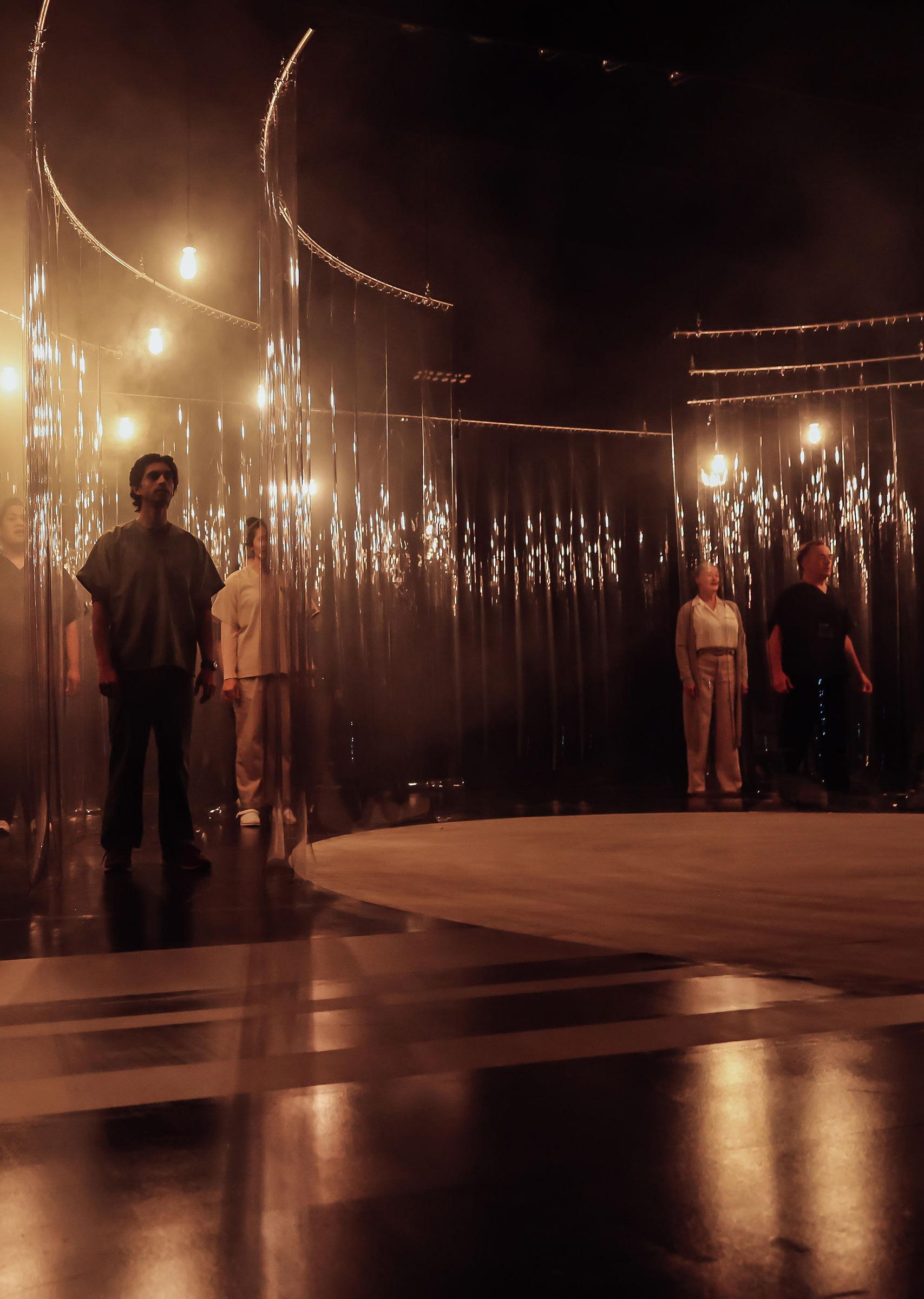
62 2021 production of Things That Matter
. Credit: Andi Crown
Note: When answering the following question you will want to find and provide physical examples from the production. A physical example is when you describe, with specificity, what is happening on stage at the time. Get down to specific detail, for example, explaining how the actor/performer is standing or moving, how far away from the audience they are, what is happening with technology, where exactly they are in space, etc. The more detail, the better!
DRAMA TECHNIQUES: BODY, VOICE, MOVEMENT AND SPACE:
• Describe how an actor who you found interesting or compelling used drama techniques in moments where they broke the fourth wall.
• Describe how two actors used proximity during a moment of tension.
• Discuss how an actor uses drama techniques during a solo moment on stage. What were they aiming to communicate? What did you understand at that moment?
• Explain another actor’s use of drama techniques and how they created a sense of authenticity within the performance.
• Choose specific moments where you felt the actor used their body, voice, movement and space in combination to create impact, focus or to support an important idea.
• Discuss why you think authenticity is important in a contemporary New Zealand performance
• Thinking about the actors who played Raf and his family:
• How did they use techniques to create their family dynamic?
• How did they use techniques to communicate their history?
• What moments of subtext were important?
• How did an actor use drama techniques to communicate subtext in their performance? Use a specific moment and example to discuss this use of subtext.
• Discuss what you found compelling about an actor’s use of drama techniques in the performance. Choose a specific moment to focus on.
63
CHARACTER:
• Discuss Raf and what his character communicated to the audience; how did Ian Hughes portray him? Plot his character arc and describe how he uses techniques to communicate this.
• Discuss the purpose of the characters Leon and Roza:
• What impact do they have on the narrative, as well as the audience and actors' relationship?
• How does the actor's use of techniques communicate their purpose in the performance?
• What was the purpose of the Minister of Health in the play? Why are they integral in this particular story and what do they make you think about?
• Explore the ensemble: what purpose do the patients brought into Middlemore serve in the narrative?
• What was the purpose of each of the characters in the play? Construct notes for each character in the performance around the following bullet points:
• Actor’s use of drama techniques to communicate the character
• What did you understand about the characters and the story?
• How they challenged you as an audience member
• How subtext was used in a specific moment to communicate an important idea.
DIRECTOR/DESIGNER CONCEPT:
• Discuss how technology or design was used during ensemble medical scenes? What do you think was at stake within the scene?
• Discuss the purpose of the performance and how the themes or ideas link to what is happening in the world; socially, politically or historically. Link your ideas to specific moments or examples from the performance.
64
• How did the way the performance was realised, impact the style of delivery of the narrative/story?
• How does the content of the play challenge and serve the audience?
• Discuss how the director brought the story to life using Drama Components - Elements, Conventions, Techniques and Technologies.
• What do you think Polata’viao is asking you to think about in the way she has directed Things That Matter?
• How did the acting and staging choices affect you as an audience member?
• What was the impact of the way the design, directorial and acting choices worked together? Choose a moment that surprised, shocked or excited you to talk about.
• Discuss why the use of strong sound and lighting design was integral to this performance?
DRAMA CONVENTIONS - STRATEGIES ESTABLISHED TO MAKE MEANING AND CONNECT TO WIDER CONTEXT:
(NB - make sure you are familiar with what the established Drama Conventions are by discussing this with your teacher)
• Identify a moment in the performance where Drama Conventions were used to create focus, mood or atmosphere:
• Explain how the convention or combination of conventions were used in the performance
• Discuss the impact of the use of the convention or combination of conventions in this moment
• Discuss how meaning was created for you, as an audience member, in this moment
• Discuss how the use of a convention or combination of conventions in a specific moment helped you think about the big ideas and themes of the play.
• What was the wider context (socially, historically, politically or geographically) that this moment linked to?
65
DRAMA ELEMENTS AND HOW THEY DRAW OUR ATTENTION TO THEMES, MOTIFS AND SYMBOLS:
• What were the main themes, questions and ideas evident in the performance? Link these themes, questions and ideas to specific moments or examples from the performance.
• How were design and directorial elements (props, setting, AV, costuming, audience positioning and interaction) and the Drama Elements used to build the performance? How did this make you feel as a member of the audience?
• Identify recurring symbols or motifs throughout the performance. Explain why they were important in helping you understand ideas being communicated in Things That Matter?
• Discuss how subtext was highlighted through the way Polata’viao created focus, mood and tension in her directing choices.
• How do these themes, symbols or ideas link to the wider world of the play and what impact does this have on the audience?
• Were there moments where the content was confronting or forced you to think about something in a new light? What impact does this have on the audience and you as a member of the audience?
66
TECHNOLOGY: LINK YOUR IDEAS TO SPECIFIC MOMENTS OR EXAMPLES IN THE PERFORMANCE.
Think about lighting, set, sound, props, costumes, make-up and how this helped bring you into the world of the play.
• How was technology used to create the atmosphere in the performance?
• How was technology used to highlight important ideas, themes and symbols in the performance?
• How was contrast and/or focus created or built through technology and why was this important?
• How did the use of technology help you gain a deeper understanding of the themes of Things That Matter?
• How did technology highlight Raf and other characters within the performance?
• Discuss why this was impactful, exciting or challenged your expectations.
• How were costumes used to communicate the characters' purpose in the performance?
• How did the use of technology highlight or enhance a character's use of subtext in the performance? You could think about:
• How does lighting contribute to mood or tension in a specific moment that highlights the character's use of subtext?
• How does sound underscore a moment where a character is using specific subtext? What does this help you understand as an audience member?
• How do actors’ placement on the stage enhance a moment of subtext?
• How the use of a prop supported an actor’s communication of subtext in a specific moment.
IMPORTANT NOTE:
When you are writing about Set or Costume, you need to be specific about the following details and also sketch what you see. Imagine the person you are writing for has not seen the production and create a vivid image in their mind of what you saw:
• For example: Set/Props
• The size, shape and dimensions of any set pieces or props used
• The materials used, their textures and the colours
67
Readings and Resources
Things that Matter. Stories of Life and Death. Galler, David, Allen & Unwin, 2016
More about Dr David Galler: https://www.stuff. co.nz/national/health/82434000/dr-david-galler-onlife-death-and-things-that-matter
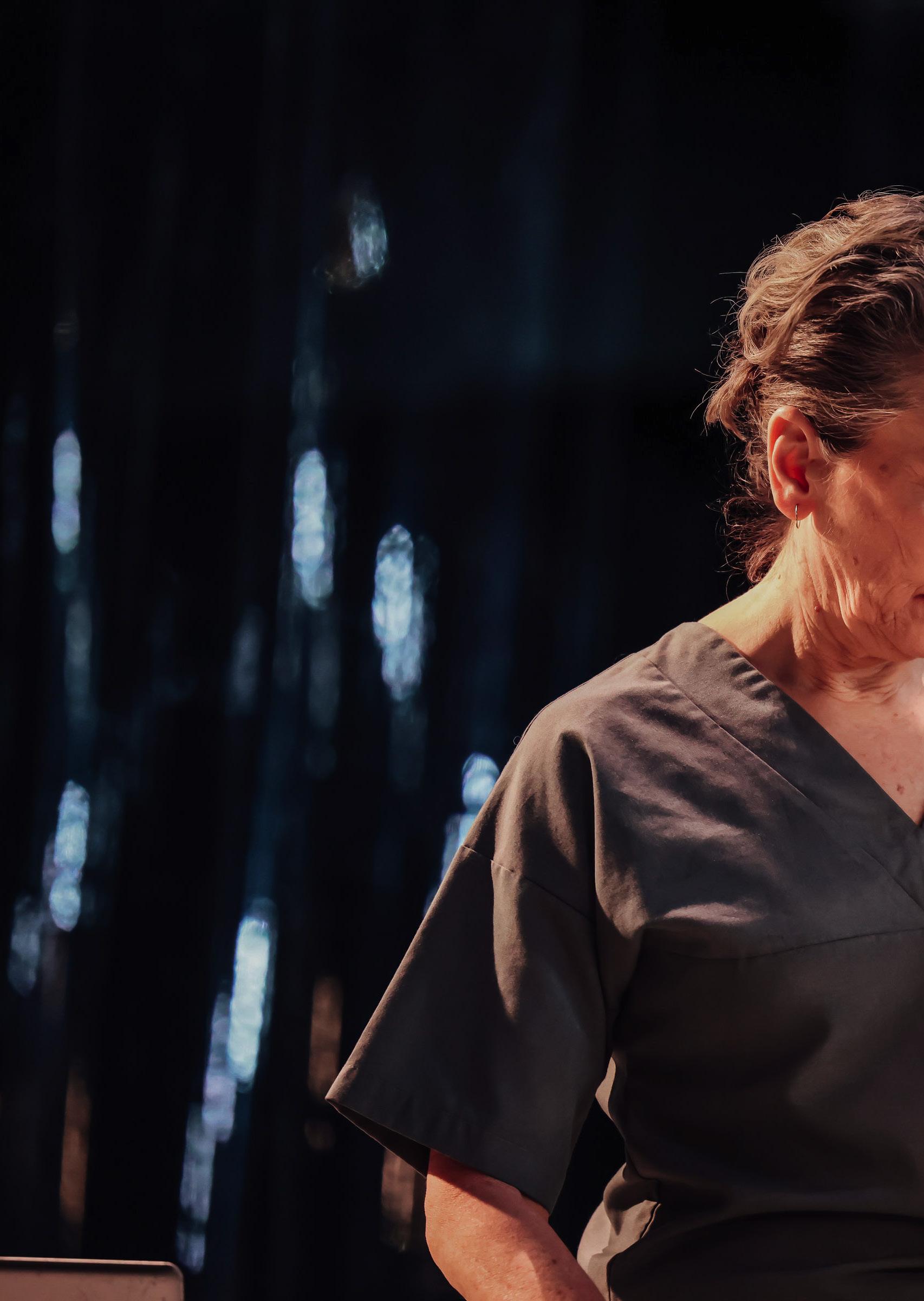
68 2021 production of Things That Matter
. Credit: Andi Crown
CORE FUNDER:
PRINCIPAL FUNDERS:
Education Pack writers: Evangelina Telfar and Anna Richardson
Additional contributions by: Laura Barron, Donogh Rees, Shaan Kesha, Rachel Marlow, Bradley Gledhill and Lynne Cardy
Education Pack Graphic Designer: Wanda Tambrin
Original Editor: Lynne Cardy
Thanks to: Philippa Campbell
UNIVERSITY PARTNER:
SAVE THE DATE FOR 2024 SEASON LAUNCH
Be the first to learn about Auckland Theatre Company's 2024 lineup of shows and the creative learning programme for schools. Keep an eye on your inbox and post-box from Tuesday 10 October
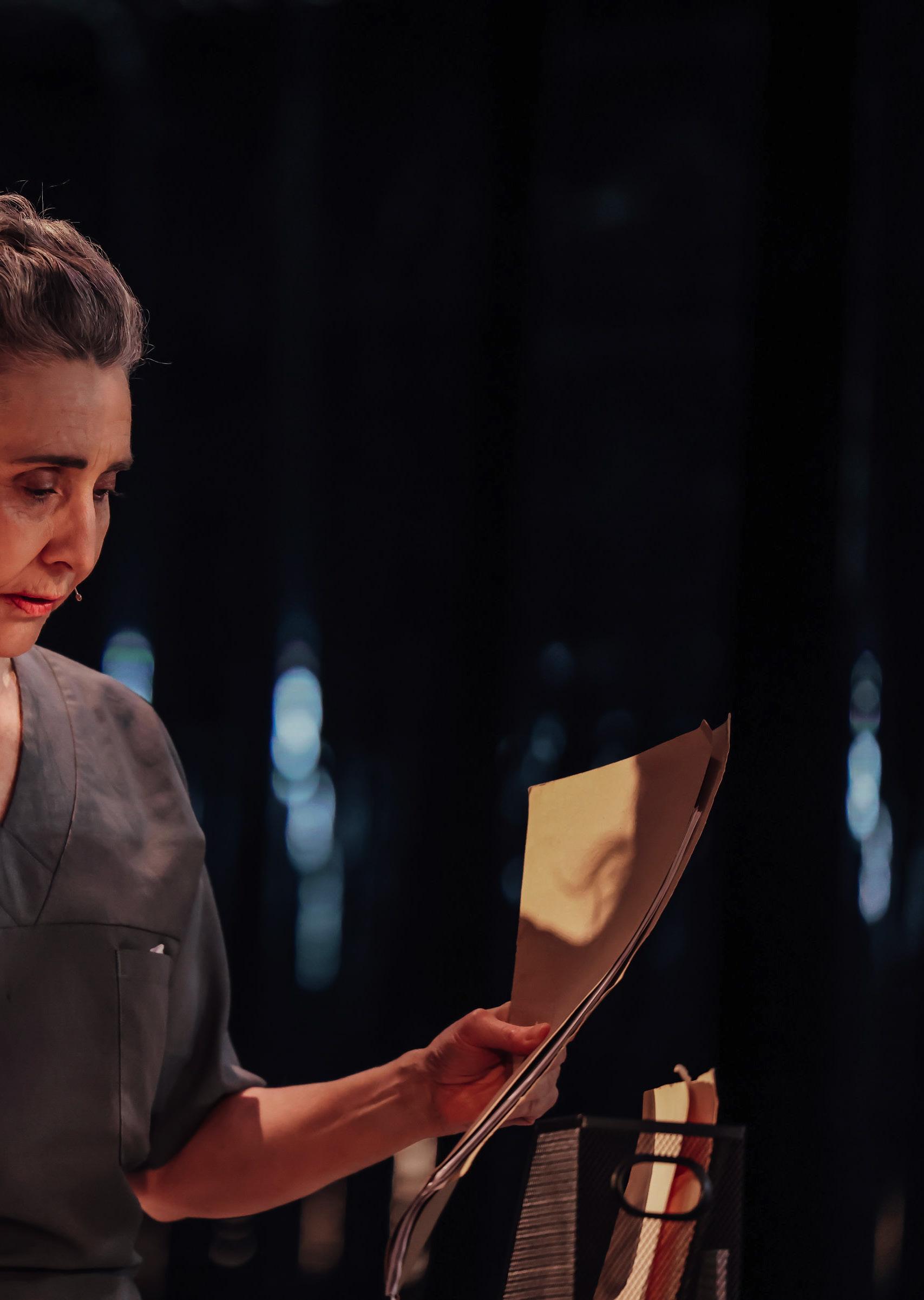



 BY GARY HENDERSON
BY GARY HENDERSON

 2021 production of Things That Matter. Credit: Andi Crown
2021 production of Things That Matter. Credit: Andi Crown





 Rafal Beckman
Leon Beckman
Roza Beckman
Rafal Beckman
Leon Beckman
Roza Beckman























 DONOGH REES
DONOGH REES






























